What is Tourism and its pros and cons elaborated
Advantages and Disadvantages of Tourism: A Comprehensive Overview
Tourism is a crucial part of the global economy, contributing significantly to job creation , economic growth, and cultural exchange. However, tourism also has its disadvantages, including environmental degradation, cultural erosion, and the potential for exploitation. In this article, we will provide a comprehensive overview of the advantages and disadvantages of tourism.
Advantages of Tourism
- Economic benefits: One of the most significant advantages of tourism is the economic benefits it provides. Tourism generates income for local businesses and creates job opportunities for people in the host community. It also boosts the local economy by increasing the demand for goods and services.
- Cultural exchange: Tourism can be an excellent way for people to experience different cultures and ways of life. It promotes understanding and tolerance between different groups and can help to break down cultural barriers.
- Preservation of heritage sites: Tourism can help to preserve heritage sites by providing the necessary funding and resources for their maintenance and restoration. This, in turn, helps to protect the cultural and historical significance of these sites for future generations.
- Environmental awareness: Tourism can promote environmental awareness by encouraging tourists to adopt sustainable travel practices. This includes reducing their carbon footprint, conserving natural resources, and minimizing waste.
Disadvantages of Tourism
- Environmental degradation: Tourism can have a negative impact on the environment , including increased pollution, depletion of natural resources, and destruction of wildlife habitats.
- Cultural erosion: Tourism can lead to the erosion of traditional cultures and ways of life. This is especially true in areas where tourism is the primary source of income, and local communities are forced to adapt to meet the needs of tourists.
- Exploitation: Tourism can lead to the exploitation of local communities, particularly in developing countries where labor laws are lax, and workers are not protected. This includes low wages, long working hours, and poor working conditions.
- Overcrowding: Tourism can lead to overcrowding, particularly in popular tourist destinations. This can result in traffic congestion, longer wait times, and increased noise levels.
Tourism has its advantages and disadvantages, and it is essential to strike a balance between the two. The benefits of tourism can be significant, but we must also be aware of its potential negative impacts. By adopting sustainable travel practices and promoting responsible tourism, we can ensure that tourism remains a positive force for economic development, cultural exchange, and environmental preservation.
Are you struggling with your paper? Let us handle it - WE ARE EXPERTS!

Get started
Starts at $9 /page
Recent Customer Feedback
See more customer feedback.., how our paper writing service works.
It's very simple!
Complete the order form by providing as much information as possible, and then click the submit button.
Select your preferred writer for the project, or let us assign the best writer for you.
Allocate funds to your wallet. You can release these funds to the writer incrementally, after each section is completed and meets your expected quality.
Download the finished work. Review the paper and request free edits if needed. Optionally, rate the writer and leave a review.
- Net Zero Features
- Conscious Living Essentials
- Geothermal Energy Installers
- Planet Earth
- Climate Policy
- Sustainability

The Pros and Cons of Tourism
We are reader-supported. When you buy through links on our site, we may earn affiliate commission.
The tourism industry is one of the most lucrative and essential industries for the global economy since it can provide revenue almost year-round. It allows people to spend time in places they want to explore and enjoy. Every year, people from all over the world visit destinations like Paris, Hawaii, Mexico and Japan to experience a new culture through food, sightseeing and adventures.
Tourism provides thousands of jobs each year and allows people to explore the world at their leisure. It’s excellent for both the people touring an area themselves for happiness and well-being, and it’s great for the country’s population as a whole.
However, the disadvantages of tourism should be addressed, especially concerning the environment. Tourism industries in some countries often ignore these cons because they want to continue providing revenue for the peoples’ livelihoods. It’s easy to overlook the negative aspects when tourism has brought enormous wealth to developing countries.
If developing nations only rely on tourism and dismiss other aspects, like the environment, society and infrastructure development, the cons can quickly outweigh the pros. Fortunately, there are ways to be sustainable in the tourism industry. Here are the pros and cons of tourism.
The Pros of Tourism
From stimulating job growth to bridging cultural divides, tourism has many benefits for people, the economy and the environment. Below are five advantages of tourism.
1. Creates Jobs
One of the most significant benefits of tourism is creating jobs for people who may have previously been unemployed. Tourism accounts for about 10% of employment worldwide , whether directly or indirectly.
The tourism industry encompasses retailers, restaurant workers, transportation industries, entertainment facilities and hospitality workers. It can even include medical workers as some people travel for cosmetic surgery or medical advice and medications. This leads to the reduction of unemployment in many countries, which reduces the burden on the government.
2. Develops Countries
As more people get jobs in developing countries, they can further progress. The government can get the funds needed to advance their nation. The tourism industry offers more security and financial stability. Plus, the government can carry out various infrastructure projects to continue its progression by building roads, hospitals, hotels, restaurants, and entertainment businesses to allow more people to stay, generating more jobs and wealth.
3. Conserves the Environment
Some of the primary attractions in countries are the historical sights and beautiful landscapes. Often, countries try to conserve these sights and attractions to continue bringing in more tourists. Governments and private entities often use tourism money to maintain historical sight and protect the environment.
4. Broadens Knowledge and Appreciation of Nature
An airboat ride through the Florida Everglades delivers more than the perfect photo opportunity. Airboat captains share stories about the river’s history, wildlife facts, environmental issues plaguing the ecosystem, and how the average person can make a difference. Travel experiences like this are crucial for broadening one’s knowledge and deepening their appreciation for the natural world. The hope is for tourists to impart their knowledge to someone else and spark an interest in conservation and sustainable habits.
5. Encourages Culture-Learning
Finally, tourism encourages the learning of different cultures. It helps to create a sense of unity among people from various cultures and countries. Tourism encourages people of all backgrounds to visit a particular place, so tourist destinations become a melting pot of other cultures. People can begin to understand one another and may even make friends with people from other countries.
The Cons of Tourism
While welcoming visitors to explore a particular area has benefits — especially within the eco-tourism subsector — it’s not all rainbows and sunshine. Unfortunately, there are some cons of tourism that often get overlooked, such as the following.
1. Damages the Environment
Although countries do their best to conserve the environment, including animals, plants and natural scenes, tourists can still be disrespectful. As people flock to one place, waste and pollution accumulate. Sometimes, tours offer animal experiences as well, which put animals through suffering. Further, land is needed to accommodate tourists, so countries will destroy habitats to build hotels and restaurants.
2. Puts Pressure on Natural Resources
Another con of the tourism industry is that it puts an immense amount of pressure on natural resources. Anytime someone stays in an area, they inevitably use the area’s natural resources , like water and food. Cities and countries around the world have faced droughts. Additionally, tourism puts stress on the local land use, leading to soil erosion which can cause damage to infrastructure.
3. Strains Infrastructure
Too many tourists in one location can significantly strain infrastructure, including roadways, water resources and waste disposal. For instance, nearly 30 million tourists visit Venice, Italy, annually, crowding narrow canals and limited roadways. In the Caribbean, Antigua and Barbuda is among the most frequently vacationed and water-stressed countries, with under 1000 cubic meter of freshwater resources per capita. Without a municipal wastewater treatment center, most households rely on poorly built septic tanks.
4. Encourages Dependence on Tourism
It’s not a good thing to be solely dependent on tourism. Regions known for their tourist destinations learned that lesson once COVID-19 spread throughout the world. When people could no longer travel, the tourism industry in countries that depended on it had a more difficult time recovering and getting the necessary resources that locals needed to survive. Without tourists, those countries would receive no more income, which affects the entire country.
5. Leads to Loss of Cultural Identity
Often, locals in a tourist destination will begin copying the lifestyles of tourists and leave their local and cultural traditions behind. Instead of shops filled with daily necessities for the locals, they are filled with things tourists need, like travel-sized toiletries and souvenirs. Fast-food chains have taken over local cuisine as well. And unfortunately, tourism has led to a growth in prostitution and human trafficking.
Making Tourism a More Sustainable Industry
Tourism is a necessary part of the economy, but the adverse effects often go unnoticed. Fortunately, there are ways to make it a more sustainable industry. Tourists should support the local economy, avoid single-use plastics, take more eco-friendly modes of transportation and avoid all of the traditional “tourist” excursions. The next time you travel, make sustainability a priority.
This post was last updated on April 9, 2024 to provide more current information.
Thanks for subscribing! Please check your email for further instructions.
Like what you read? Join other Environment.co readers!
Get the latest updates on our planet by subscribing to the Environment.co newsletter!
About the author
What Are the Benefits of Using Reusable Water Bottles?

What Is an Eco-Village? Living in a Climate-Focused Community

Death by a Thousand Cuts: A Deep Dive of Taylor Swift’s Carbon Emissions
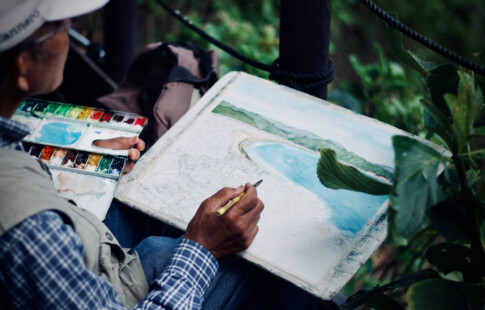
10 Climate Change Art Projects Grappling With Hope and Reality

Environmental Impact of TikTok: Scrolling Your FYP Emits Tons of Carbon

What Can Scientists Learn From a Bird Migration Map?
The Disadvantages of Tourism – What Happens When Travel is not Sustainable
This post will highlight some of the common disadvantages of tourism, and the negative impacts it can have on destinations when it is not managed in a sustainable way.

Table of Contents
The problem with tourism
In 2019 (pre-COVID), international tourist arrivals grew to 1.5 billion and the industry generated 1.4 trillion USD dollars of tourism receipts ( UNWTO ). It was the tenth straight year of growth, with arrivals continuing to increase each year. The receipts from tourism were even growing at a faster rate than global GDP! Ten years of rapid growth, and in many destinations, limited restriction or control on that growth has left tourism causing some pretty serious damage to the destinations it occurs in. It is only in recent years that sustainable tourism has really become a serious priority for destinations and operators around the world. In many cases, it has been out of necessity, in an attempt to resolve the issues unsustainable tourism has caused over the years.
Now, I love to travel. And this list is by no means designed to try to make anyone stop travelling (COVID has already done that for us…). But I think it is really important as travellers to be aware of the issues we are contributing to. Either directly or indirectly. The negative impacts of tourism are usually classified into three different areas, economic, social and environmental. In this post, I will share four negative impacts tourism can have in each of these areas. This list is by no means exhaustive, and there are (unfortunately) many other disadvantages of tourism. But the idea of this post is to highlight the problems with unsustainable tourism.
Economic disadvantages of tourism
It might seem hard to believe that there can be economic disadvantages of tourism when it produces so much revenue. But the economic side of tourism is more than just profits. And unsustainable tourism driven by profits only can have dire consequences for the destinations it occurs in.
Over reliance on tourism
Countries can become over-reliant on tourism, with a large portion of their economy and GDP coming from tourism. The situation the world finds itself in now with COVID could not be a better illustrator of the damages of being over-reliant on tourism, a very volatile industry. But even before a global pandemic, this was still an issue. Tourist’s destination preferences change easily, and it doesn’t take much to sway them away from a particular destination. Relying on tourist’s to come back to the same place year after year is risky. Events such as natural disasters, terrorism, health concerns or even just a change in trend can leave countries that were thriving on tourism empty.

Low quality employment
It’s true that tourism generates employment for many. But often these jobs are low paying and seasonal. With employees completing menial tasks with little room for progression or career advancement. It’s not uncommon for establishments like resorts to hire international staff for senior, managerial roles. Usually from more economically developed countries. This leaves local workers stuck in low-level roles, paid peanuts and not guaranteed year-round work.
Tourism dollars leaking out of local economies
A major economic issue with the tourism industry is that of leakage. You can read about this issue in more detail here. But basically, leakage is when a portion of tourism income does not stay in the destination where the tourists visited. Money ‘leaks’ out to more developed countries. This usually occurs through international companies such as airlines and resorts taking their profits back to their headquartering countries. And the local destination and community do not get the economic benefits of the tourists that have visited.

Favoured over other industries
In countries where tourism is a major industry sector, the government can sometimes focus all their energy and funds on the industry. This is often at the peril of other important industries like education, infrastructure and healthcare. This can result in pristine tourist areas, new infrastructure and funding for the benefit of visitors. But what about the locals who live in the country? They might not enjoy anywhere near the same level of development.
Social disadvantages of tourism
The impacts of tourism on society and culture are often contested and deeply complicated. Tourism is just one of many forces that can impact on and change cultures, like globalisation, technology and the media. But there is no denying that tourism and culture and society are inseparable. And there are some major disadvantages of tourism in this area.
The commodification of culture
This is one of the most complex, morally challenging and difficult parts of tourism. It warrants an entire discussion of its own, but in short, tourism can turn culture into a commodity. When traditional culture becomes an attraction, that people pay to see, this raises complicated ethical issues. Often times the culture that is presented to tourists has been adapted to be more appealing to the visitor. Traditional dances and costumes are amended, ceremonies or rituals are shortened, and handicrafts are often made smaller or lighter to fit in suitcases. Only certain elements of a culture are deemed worthy of presenting to tourists. And usually, there is a whole host of problems behind closed doors that tourists are never exposed to or aware of. The culture of a destination as seen through the tourists’ eyes is not authentic at all.
Erosion of culture
This issue is different to the previous issue in that culture can not only be commodified but in many cases lost altogether as a result of tourism. The ‘demonstration effect’ occurs when locals, particularly in traditional or indigenous cultures, observe the behaviours of visitors, usually Western tourists. Exposing the locals to a completely different way of life can lead to changes in their local culture, particularly from younger members of the community. They can begin to mimic and replicate the cultures of the tourists who visit and move away from the customs and traditions of their own culture.

Tourists behaving badly
When people are on holiday they tend to leave their moral compass at home. They are relaxing, want to have a good time, and outside of their usual environment. This can lead to major clashes between tourists and locals, and leave the locals wishing the tourists had never arrived. Whether intentionally or unintentionally, tourists can offend locals and make them uncomfortable in their own homes. Dressing inappropriately, not being aware of culturally unacceptable behaviours and general bad behaviour through the use of alcohol and drugs are just some of the bad behaviours tourists bring to a destination.
Physical damage to built culture and heritage
The Colosseum, Petra, Angkor Wat, the Great Wall of China. Some of the biggest tourist attractions in the world are ancient, historical sites, built centuries ago by different civilisations. These physical representations of ancient cultures are old and fragile. And having thousands, sometimes millions, of tourists tramp through them each year places a lot of strain on the structures and can cause irreparable damage. Not all damage is deliberate on the part of the tourists, but simply having people walk over old stones, touch rock walls and lean on sites can cause irreversible erosion and damage. However many sites are suffering from the deliberate actions of tourists. Littering, graffitiing, taking pieces of the site home with them and climbing on off-limits structures.

Environmental disadvantages of tourism
The negative impacts of tourism on the environment are often the most publicised and talked about. They are easier for us to physically see and quantify, so it can be easier to talk about them. But the impacts that tourism can have on the environment are very complex and can be both direct and indirect. The environment is a complicated web of ecosystems, and one small action can have rippling effects throughout an entire area or species. This is by no means an exhaustive list of the negative things tourism can do to our environment. But some of the issues listed are a bit easier to quantify, where tourism has a direct impact.
Intense use of resources
Tourists, like all people, use resources such as water and energy. However many popular tourist destinations around the world are already dealing with resource scarcities, and tourism can severely exacerbate the problem. Tourism as an industry is a massive overuser of water. Swimming pools and golf courses require a lot of water, and I can’t think of something more synonymous with a holiday than a swimming pool. Tourists themselves tend to use more water than when they are at home, and doing their laundry can consume a lot of water and energy. Cooling and/or heating large hotels and resort complexes and their swimming pools also require a lot of electricity.

Physical damage to natural and marine areas
Tourism takes place in some of the most pristine, yet fragile natural areas in the world. Hiking in the rainforest, snorkelling in coral reefs and climbing alpine mountains are just some of the many activities that can physically impact and damage the natural environment. Vegetation can be damaged having tourists continually trampling over the same paths (and often going off the path too). Corals are damaged by boats and anchors, and tourists (accidentally or not) touching and breaking them. This damage has major flow-on effects on the wider ecosystems and can indirectly impact entire ecosystems and species.

Increased waste, pollution and emissions
From rubbish to sewerage, carbon emissions from transport carriers and water pollution – tourism produces a lot of unwanted waste. In many lesser developed countries around the world, tourism has come on quicker than their local infrastructure can handle, and disposing of the increased waste tourists bring has proven troublesome. Sewerage can end up in local rivers and lakes, and rubbish can be burnt or end up in the ocean. And transporting tourists from point A to B, by planes, in particular, releases a ton of carbon emissions into our atmosphere.
Land use and infrastructure development
Tourists need places to stay, airports for planes to land in and ports for boats to depart from. Natural areas are often cleared to make way for this construction, displacing animals and destroying forests or wetlands. A lot of tourism occurs in coastal areas, and building hotels and resorts right along the coastline can have major impacts on the ocean and surrounding reefs due to erosion and sand runoff. The same goes for constructing marinas and ports, where sand mining and dredging can have disastrous consequences for marine ecosystems.

The disadvantages of tourism: Conclusion
As I mentioned previously, this list is by no means exhaustive and unfortunately there is a range of other disadvantages of tourism. The problems tourism can cause in destinations around the world are complicated and entangled with other deep societal issues such as development, globalisation and colonialism. The purpose of sharing these negative impacts was to highlight that tourism is not a perfect industry. And as travellers, we should be aware of the damage that we can contribute to when we travel. But it’s not all bad news! Tourism, when managed sustainably, has the opportunity to contribute to positive change for our planet. And there are countless examples of the positive impacts of tourism!
What do you think? Have you experienced some of these disadvantages of tourism first hand? Can you think of any other negative impacts tourism can have on the economy, culture and environment? Let me know your thoughts in the comments below.

Sally Rodrick
Sally Rodrick is the voice behind Sally Sees. She has spent 12 months travelling in Mexico and Central America, and has her sights firmly set on South America. Sally helps thousands of readers discover the magic of Latin America. Sharing detailed guides to inspire and equip them with the knowledge they need to plan their own epic adventures in this incredible part of the world.
Leave a Comment Cancel Comment
The comments.
M.K.CHETTRI
It’s nice as you have studied and observed tourists and tourism from the very near…..it’s fantastic. but the thing is that, tourism must go strictly and very sincerely with modern technological facilities keeping in mind about our extremely valuable resources security and conservation.
Thankyou for your comment. I agree, for tourism to be beneficial for all parties involved, and the environment it has to be managed carefully with strict limitations in place to protect resources.
Thanks for simplifying it for me
My pleasure, I hope it was helpful 🙂
Hi Sally, I enjoy your travel blogs very much and appreciate the way you approach your travel experiences. They have been particularly helpful as I am planning a road trip to BCS.
Regarding the negative side of travel, it is much like the negative side of modern life in general. Our collective efforts and our individual choices can have an impact, however it is governments and large corporations who cause the most damage and reap the most profits from industry and development, and also have all the power to either continue down a path of environmental and cultural destruction or make crucial policy changes to preserve our world. Unfortunately, preservation isn’t lucrative but exploitation is. That’s why our environmental crisis is worsening, not improving, no matter how many reusable straws people are buying.
While I firmly believe that as individuals and consumers we must make conscious choices and also “vote with our dollars”, I find it frustrating that we as a collective society of caring individuals have fallen for the greatest psychological trick of industry: that it’s up to us, the consumer, to make sure our world doesn’t get destroyed, while governments and industries continue to knowingly create mass scale destruction, pollution, waste and overdevelopment.
This same problem applies to most areas of modern life, not just travel, and frankly it is extremely distressing. As someone who is very conscious of the dangerous effects of modern consumerism, I am often extremely troubled and sometimes paralyzed by it. So for me it becomes important to live with balance in this regard. I will always live consciously, but I need to be careful not to feel the enormous and distressing weight of these problems squarely on my shoulders alone. Ultimately, industry and government need to be held accountable more so than individuals. Plus, not all individuals are on board with these efforts. Many plainly do not care. Those individuals who contribute most to environmental and cultural destruction aren’t the ones who will be reading blogs like this, or refraining from purchasing multiple homes, or living beyond their share of resources. They don’t care and never will. We need our leadership to change and to lead us all into conservation and preservation.
Certainly we as caring citizens of the planet should live consciously but our small efforts are no match for the unbridled and unregulated industries that are the true source of our worlds demise.
I certainly appreciate the message you are putting forth here and everything you point out is absolutely accurate, but I fear the ones who need to hear it the most won’t be the ones this message will reach.
Thank you for being a conscious and caring citizen of the planet and thank you for your lovely and helpful blogs. Best wishes and happy trails.
Hi Marissa,
Thankyou for your insightful comment. I couldn’t have said it better myself and completely share your sentiment on the situation of our planet.
To be perfectly honest, I try not to think too much about what our governments and large corporations are doing to our earth. It often feels to overwhelming to even comprehend, when it is so far out of our control.
You are completely right in saying that they are the ones that are really doing the damage, and the only ones that have the potential for real change. But for that to happen profit must be sacrificed, and planet must come first. There are small hints of this happening in some places around the world, and I think countries with large tourism industry are amongst some of the first to say no to profitable industries that are detrimental to the environment. Finally they can see the long term condition of the environment is more valuable than a quick financial win in a destructive industry. A pristine environment with rich biodiversity will be worth financially more to tourists in the long term, so there is incentive to keep it that way.
That’s why I think travel can be so powerful. Sure, travelling produces emissions and has its own set of challenges for our environment. But as you say, modern living in any context, at home or while travelling, is damaging by its very nature. I believe pros of travel can outweigh the cons if done right.
It’s a very tough line between knowing that really, as individuals, we have very little power to make meaningful change. But if we swing too far in the opposite direction it turns into an attitude of not even bothering at all. Little steps can have little impacts, and whilst it won’t solve the enormous problems our earth is facing – it can’t hurt to do the right thing where and when we can.
Keep exploring our beautiful world, and take on board the issues you can solve. All the best, Sally x
Sinadi Aanya
This is grate I got a lot of information thank u so much 🙏🏻☺️
I’m so glad it was helpful Sinadi! All the best, Sally
- About Us 👨👩👧
The Negative Environmental Impacts of Tourism
The tourism industry is one of the fastest growing industries in the world. On a local, national, and international level, tourism is economically and environmentally significant actor that has great power to affect the future development.
Tourism has the capacity to help support communities and instigate positive environmental change when done with the right approach towards the long-term sustainability in regions and complying with the UN’s 17 Sustainable Development Goals that range from eradicating hunger, gender equality to addressing climate actions based on the specific regional needs.
We can see the rise of the positive trend in the last years. Ecotourism and sustainable tourism have gained popularity in the industry but there are still many areas where improvements need to be done. If the number of tourists in a given area is greater than the capacity of the local environment or supporting infrastructure (which is the case of many popular destinations), negative impacts quickly arise and can become overwhelming for the system.
As we embark on new adventures in foreign countries it’s important to realize what environmental impacts our presence poses to local ecosystems and resources. According to the United Nations Environment Programme (UNEP), the three negative environmental impacts of tourism are: the depletion of natural resources, pollution and physical degradation of ecosystems. We will look at these more in detail now.
How does tourism affect the environment? The negative environmental impacts of tourism
Tourism sector has great influence over wellbeing of local residents. It is an industry that flourishes in large cities as well as remote rural areas rich in natural wonders. For many distant communities, tourism is the only opportunity of generating sufficient income to sustain their lifestyle and traditions. It can bring lot of good to regions, but also lot of bad – fast degradation, extinction, and depletion, if not done with the long-term planning and preservation in mind.
In some situations, it is difficult to realize this negative influence until its too late. We already have a few negative examples and data to look at to see the degrading tendency.
#1 The depletion of natural resources
The depletion of natural resources is a growing concern especially in places where resources are already scarce. Water, in particular, is considered a critical resource which is greatly misused in the tourism sector.
I. Water overuse
In many popular tourist destinations, water is overused by tourists in hotels, for breathtaking swimming pools and luxurious wellness areas. When on vacation, most travelers tend to use much more water for personal use than at home, resulting in larger quantities of wastewater and creating water shortages which affect local residents.
The high tourism season goes usually against the natural water cycle of an area and doesn’t consider years with insufficient rainfall – a problem that is on the rise due to climate shift. The driest months of the year are the months of peaking demand for water in resorts and areas of a special tourist interest. These places get crowded with people who expect to have unlimited accessibility to clean water supply from local sources.
This creates many problems for residents in not having enough water for basic daily needs, as groundwater is often redirected and overdrawn by large hotels, resulting in drying wells of small communities, and increasing salinity of the remaining water table from dissolved minerals in the soil. Additionally, many small farmers struggle with not having water to grow crops – especially during drier years when it hasn’t rained for months.
A special report on Water Equity in Tourism from 2012 mentions a sad statistic. Globally, almost 900 million people still lack access to clean water and 2 million people (mostly children) die every year due to the health problems arising from this hindered access. These numbers include people from countries with popular destinations, mainly in the Global South or Mediterranean.
Zanzibar, Bali, India, but even Greece and Spain are suffering of these consequences. In Zanzibar, an average household consumes a little over 93 liters of water per day, while an average consumption per room in a guesthouse is 686 liters. That is 7 times more. But the difference is even bigger when it comes to a luxurious 5-star hotel room. The consumption rises to unbelievable 3,000+ liters of water per day [3] .
Tourism and agriculture compete for water also in Spain. Spain is important producer of vegetables and fruits for the rest of Europe. The intensive agriculture and greenhouse cultivation requires water to keep up with the demand. At the same time, the country is one of the world’s leading tourist destinations with great demand for water despite the fact that the country has been drought stricken for a couple years in a row due to climate change [4] . Both of these important economic sectors are standing against each other in an unsustainable way.
II. Other resources
The tourism industry depends upon consumption of renewable and non-renewable resources that are available at a given location. This includes variety of minerals, metals, and biomass resources. The industry burns higher amounts of fossil fuels and therefore produces greenhouse gases; affects health of fertile soils needed to grow enough food, and hurts whole ecosystems like, for example, forests or biodiverse wetlands , and this way the impacts reach even the local wildlife. When more recreational facilities are built, natural habitats with their riches are destroyed and animals are driven away into scarce natural areas or conflict with other human projects.
Land resources, such as forests, are affected when trees are used for building materials or collected for fuel. Tourist attractions and accommodations are heavily reliant on energy for heating, provision of hot water and electricity. That is where the energy demand actually follows the same pattern as water consumption.
Imagine a town like Venice. The town has 271 thousand permanent residents [5] but welcomes every year increasing number of tourists. In 2003, 2.75 million tourists visited the town, while in 2019 this number has risen to 5.5 million [6] . Each visitor consumes energy and resources of the town, further contributing to environmental problems linked with the use of fossil fuels and other non-renewable energy sources.
#2 Overconsumption & Waste production, incl. food waste
What is the most common image of a nice vacation at some beautiful beach town? Good food, drinks at the beach, little refreshments, and attractive sights with a variety of relaxing activities for everyone. When on vacation, most of us want to forget daily responsibilities. This includes meal planning or carrying with us that refillable water bottle or other long-term use items like quality slippers or reusable shopping bags.
When indulging on that new experience, many rely on single-use plastic items that are fast to dispose. In fact, tourists can produce twice that much waste in a day than long term residents. It has been estimated that the marine litter in the Mediterranean increases by up to 40 percent during the peak season [8] .
UNEP estimates that one guest can generate from between 1 to 12 kg of solid waste per day when visiting a new place [9] . The numbers vary based on many factors – location, the type of accommodation, personal preferences, and a character of the stay. Based on the predictions, we would see an increase of 251 percent in solid waste production due to tourism through 2050, if countries do not adopt sustainable practices of addressing product cycle and waste disposal.
Tourists also tend to be more reckless with food. Such behavior contributes to food wasting which is a large problem on its own .
However, waste directly produced by a tourist is not the only waste coming from popular destinations. Large portion of solid waste originates from the background services for tourists – laundries, restaurants, wellness, entertainment and accommodations.
Solid waste and littering can degrade ecosystems and alter the physical appearance of the landscape. Marine litter harms marine life, often leading to their death, and degrades sensitive and unique, yet vital, ecosystems.
As more tourism facilities are built, sewage pollution also increases. Sewage runoff in seas and lakes damages terrestrial and aquatic ecosystems, including vulnerable coral reefs which are often the main attraction of a place. Pollution of waterways in any way can stimulate excessive growth of algae, leading to eutrophication, and alter salinity and siltation of water bodies. These are changes to the environment make it difficult for native plants and animals to survive.
#3 Pollution
Pollution in the tourism industry comes in many forms: increased emissions linked to transport and higher need of energy, solid waste as mentioned in the paragraph above, sewage, oil and chemical spills, but even the less talked about noise and light pollution .
One of the reasons why newly hatched sea turtle babies get confused and head in the opposite direction of water, are the artificial lights we installed along coastlines. Baby turtles have strong instinct to follow the light to guide them to the sea where their life journey begins. In nature, the moon reflection on the water was the brightest point on the beach. Nowadays, however, lamps, bars and other lights shine brighter at night and easily confuse the hatchlings to head in the wrong direction and often lose their life because of that.
Noise pollution arises from transportation and recreational vehicles such as snowmobiles and jet skis. Noisy tourist destinations and thoroughfares can disturb and distress wildlife, especially in sensitive ecosystems that are often the reason why tourists visit the location in the first place.
Cruise ships are among the top polluters. These “floating cities” make extra noise in deep waters and migration routes of many aquatic mammals who are highly sensitive to noise levels in their serene environment. But that’s not all. Cruises release high amounts of raw sewage and waste of passengers directly into the water. Unfortunately, their practices of dealing with waste are not transparent and are corrupt. At the same time, these giant ships burn fossil fuel and release pollutants in the air, including excessive amounts of carbon dioxide [9] .
Scientists have also found that bacteria originating from sewage contamination of coastal waters affect coral reefs in numerous locations and is clearly linked to increased popularity as tourist destination. One badly affected example is the Mesoamerican Reef. The Reef has already lost 80 percent of corals to pollution released from insufficient infrastructure of trending destinations, such as Cancun, Tulum or Playa del Carmen, that host increasing numbers of tourists. The main problem here is too fast development of luxurious resorts without specific plans for upgrading wastewater treatment facilities and infrastructure. Unfortunately, this is a common issue of many special locations of natural beauty.
#4 Greenhouse gas emissions and contribution to global warming
Most human activities that encompass modern lifestyle contribute to greenhouse gas emissions. Add to this travel to some exotic destination half-way across the globe and the number grows even bigger, adding up large chunk to our carbon footprint. In total, tourism accounts for more than 5 percent of global emissions of carbon dioxide. This number has been growing steadily and made up around 1,600 million tons of CO2 in 2016 [10] .
According to a report from the World Tourism Organization (UNWTO), the transport is responsible for 75 percent of carbon dioxide emissions in tourism. Air, road, and rail transportation are the main means of travel among tourists. The most polluting form of travel in terms of emissions are the flights – airplanes accounted for 40 percent out of total CO2 emissions in tourism sector in 2005 – especially due to low prices of flights that made this way of travel accessible to masses. The next significant polluter were cars with 32 percent [10] .
Energy consumption to provide services tourists expect is the next large CO2 contributor after the transport. Most accommodations still rely heavily on fossil fuel energy to run air conditioners, water and room heating and other basic or extra services (spas, pools) that consume lot of power. Unfortunately, the burning of fossil fuels has impacts globally and contributes to climate change .
Energy and transport are both needed even when new resorts are built, or to bring diversity of food to offer to guests, to pick up solid waste, or to clean and maintain recreational areas. Carbon dioxide is not the only gas emitted in the air during these processes, other potent greenhouse gasses such as methane or nitrous oxide are as well. The contribution of tourism to climate change is significant and will grow unless switch to renewable energy is made.
#5 Soil erosion and unsustainable land use
Reckless development and fast expansion of infrastructure, insufficient infrastructure like for example not enough parking spots and cars parked on the edges of roads, too crowded natural sites, disrespect of rules (stepping off the path) can easily kickstart erosive processes and speed up degradation of sites.
Tourism and recreational activities often change soil properties, especially if the number of tourists is greater than the ecosystem capacity to deal with it. In the most visited places, tourists trample the vegetation around trails, slowly creating larger patches of vegetation free surface. Frequently walked trails become compacted, which leads to the decreased soil permeability and higher surface runoff. The combination of these factors then results in progressively eroding trails and areas around them as people try to avoid slippery or muddy surface of the main trail.
The same scenario happens when off-road biking, horse riding, having fun with ATVs or parking cars on the side of the road.
Construction sites of new resorts or their expansion into surrounding natural areas, coastlines or on the mountain sites is a big contributor to erosion. Many projects begin by removing vegetation, which affects the ability of soils to absorb water, often leaving soils exposed and vulnerable for many years before the project is finished.
Impervious surfaces of roads, parking lots or around accommodation units do not allow water to infiltrate into the ground. This increases the surface runoff which washes off fragmented pieces of soil even faster. In some locations, spaces between buildings create pathways for wind that magnify its erosive power.
#6 Physical degradation of ecosystems and loss of biodiversity
It is estimated that the average rate of expansion of tourism is 3 percent in developed countries and can be up to 8 percent in developing countries [11] . The industry has many physical impacts on the environment where growth happens, and more short-term visitors come by to admire the place. Many popular tourist sites are located in areas of sensitive ecosystems. Ecosystems such as rain forests, wetlands, mangroves, coral reefs , sea grass beds and alpine regions are often threatened because they are attractive places to developers and tourists who seek the special feeling of a close contact with nature’s wonders.
Construction and infrastructure development can include extensive paving, sand mining, wetland draining, marine development and deforestation. Unsustainable land use practices can lead to sand dune and soil erosion and the deterioration of the landscape.
Not only is the physical environment under threat but living organisms and their natural cycles are also altered. Ecosystem disturbance can lead to destruction in the long term. Poor building regulations and land use planning can also alter the aesthetic appeal of the local environment. This puts a strain on both the natural environment and indigenous structures of the area.
Around the world are many ecotourism activities and sustainable tourism businesses that keep environmental values at the heart of their business practices. Conventional tourism businesses on the other hand don’t always consider natural resources, pollution and environmental degradation.
Before you jet off on your next travel adventure be sure to take some environmental values with you. To reduce your ecological footprint as a tourist be sure to conserve the amount of water you use, dispose of waste appropriately, tread lightly on the land, and become aware of the local ecosystems you choose to visit. Wherever you may go in the world do your best to support green businesses and minimize your impact on the environment.
Was this article helpful?
About greentumble.
Greentumble was founded in the summer of 2015 by us, Sara and Ovi . We are a couple of environmentalists who seek inspiration for life in simple values based on our love for nature. Our goal is to inspire people to change their attitudes and behaviors toward a more sustainable life. Read more about us .
- Agriculture
- Biodiversity
- Deforestation
- Endangered Species
- Green Living
- Solar Energy
Sliding Sidebar
National Geographic content straight to your inbox—sign up for our popular newsletters here

What's the problem with overtourism?
With visitor numbers around the world increasing towards pre-pandemic levels, the issue of overtourism is once again rearing its head.
When locals in the charming Austrian lakeside village of Hallstatt staged a blockade of the main access tunnel, brandishing placards asking visitors to ‘think of the children’, it highlighted what can happen when places start to feel overrun by tourists. Hallstatt has just 800 residents but has opened its doors to around 10,000 visitors a day — a population increase of over 1,000%. And it’s just one of a growing number of places where residents are up in arms at the influx of travellers.
The term ‘overtourism’ is relatively new, having been coined over a decade ago to highlight the spiralling numbers of visitors taking a toll on cities, landmarks and landscapes. As tourist numbers worldwide return towards pre-pandemic levels, the debate around what constitutes ‘too many’ visitors continues. While many destinations, reliant on the income that tourism brings, are still keen for arrivals, a handful of major cities and sites are now imposing bans, fines, taxes and time-slot systems, and, in some cases, even launching campaigns of discouragement in a bid to curb tourist numbers.
What is overtourism?
In essence, overtourism is too many people in one place at any given time. While there isn’t a definitive figure stipulating the number of visitors allowed, an accumulation of economic, social and environmental factors determine if and how numbers are creeping up.
There are the wide-reaching effects, such as climate change. Coral reefs, like the Great Barrier Reef and Maya Bay, Thailand, made famous by the Leonardo DiCaprio film, The Beach , are being degraded from visitors snorkelling, diving and touching the corals, as well as tour boats anchoring in the waters. And 2030 transport-related carbon emissions from tourism are expected to grow 25% from 2016 levels, representing an increase from 5% to 5.3% of all man-made emissions, according to the United Nations World Tourism Organisation (UNWTO). More localised issues are affecting locals, too. Renters are being evicted by landlords in favour of turning properties into holiday lets, and house prices are escalating as a result. As visitors and rental properties outnumber local residents, communities are being lost. And, skyrocketing prices, excessive queues, crowded beaches, exorbitant noise levels, damage at historical sites and the ramifications to nature as people overwhelm or stray from official paths are also reasons the positives of tourism can have a negative impact.
Conversely, ‘undertourism’ is a term applied to less-frequented destinations, particularly in the aftermath of the pandemic. The economic, social and environmental benefits of tourism aren't always passed on to those with plenty of capacity and, while tourist boards are always keen for visitors to visit their lesser-known attractions, it’s a more sustainable and rewarding experience for both residents and visitors.

What’s the main problem with it?
Overcrowding is an issue for both locals and tourists. It can ruin the experience of sightseeing for those trapped in long queues, unable to visit museums, galleries and sites without advance booking, incurring escalating costs for basics like food, drink and hotels, and faced with the inability to experience the wonder of a place in relative solitude. The absence of any real regulations has seen places take it upon themselves to try and establish some form of crowd control, meaning no cohesion and no real solution.
Justin Francis, co-founder and CEO of Responsible Travel, a tour operator that focuses on more sustainable travel, says “Social media has concentrated tourism in hotspots and exacerbated the problem, and tourist numbers globally are increasing while destinations have a finite capacity. Until local people are properly consulted about what they want and don’t want from tourism, we’ll see more protests.”
A French start up, Murmuration, which monitors the environmental impact of tourism by using satellite data, states that 80% of travellers visit just 10% of the world's tourism destinations, meaning bigger crowds in fewer spots. And, the UNWTO predicts that by 2030, the number of worldwide tourists, which peaked at 1.5 billion in 2019, will reach 1.8 billion, likely leading to greater pressure on already popular spots and more objection from locals.
Who has been protesting?
Of the 800 residents in the UNESCO-listed village of Hallstatt, around 100 turned out in August to show their displeasure and to push for a cap on daily visitors and a curfew on tour coach arrivals.
Elsewhere, residents in Venice fought long and hard for a ban on cruise ships, with protest flags often draped from windows. In 2021, large cruise ships over 25,000 tonnes were banned from using the main Giudecca Canal, leaving only smaller passenger ferries and freight vessels able to dock.
In France, the Marseille Provence Cruise Club introduced a flow management system for cruise line passengers in 2020, easing congestion around the popular Notre-Dame-de-la-Garde Basilica. A Cruise Lines International Association (CLIA) spokesperson said, “Coaches are limited to four per ship during the morning or afternoon at the Basilica to ensure a good visitor experience and safety for residents and local businesses. This is a voluntary arrangement respected by cruise lines.”
While in Orkney, Scotland, residents have been up in arms at the number of cruise ships docking on its shores. At the beginning of 2023, the local council confirmed that 214 cruise ship calls were scheduled for the year, bringing around £15 million in revenue to the islands. Following backlash from locals, the council has since proposed a plan to restrict the number of ships on any day.

What steps are being taken?
City taxes have become increasingly popular, with Barcelona increasing its nightly levy in April 2023 — which was originally introduced in 2012 and varies depending on the type of accommodation — and Venice expects to charge day-trippers a €5 fee from 2024.
In Amsterdam this summer, the city council voted to ban cruise ships, while the mayor, Femke Halsema, commissioned a campaign of discouragement, asking young British men who planned to have a 'vacation from morals’ to stay away. In Rome, sitting at popular sites, such as the Trevi Fountain and the Spanish Steps, has been restricted by the authorities.
And in Kenya’s Maasai Mara, meanwhile, the Narok County governor has introduced on-the-spot fines for off-roading. He also plans to double nightly park fees in peak season.
What are the forecasts for global tourism?
During the Covid pandemic, tourism was one of the hardest-hit industries — according to UNWTO, international tourist arrivals dropped 72% in 2020. However, traveller numbers have since been rapidly increasing, with double the number of people venturing abroad in the first three months of 2023 than in the same period in 2022. And, according to the World Travel Tourism Council, the tourism sector is expected to reach £7.5 trillion this year, 95% of its pre-pandemic levels.
While the tourism industry is forecast to represent 11.6% of the global economy by 2033, it’s also predicted that an increasing number of people will show more interest in travelling more sustainably. In a 2022 survey by Booking.com, 64% of the people asked said they would be prepared to stay away from busy tourist sites to avoid adding to congestion.
Are there any solutions?
There are ways to better manage tourism by promoting more off-season travel, limiting numbers where possible and having greater regulation within the industry. Encouraging more sustainable travel and finding solutions to reduce friction between residents and tourists could also have positive impacts. Promoting alternative, less-visited spots to redirect travellers may also offer some benefits.
Harold Goodwin, emeritus professor at Manchester Metropolitan University, says, “Overtourism is a function of visitor volumes, but also of conflicting behaviours, crowding in inappropriate places and privacy. Social anthropologists talk about frontstage and backstage spaces. Tourists are rarely welcome in backstage spaces. To manage crowds, it’s first necessary to analyse and determine the causes of them.
Francis adds: “However, we must be careful not to just recreate the same problems elsewhere. The most important thing is to form a clear strategy, in consultation with local people about what a place wants or needs from tourism.”
As it stands, overtourism is a seasonal issue for a small number of destinations. While there is no one-size-fits-all solution, a range of measures are clearly an option depending on the scale of the problem. For the majority of the world, tourism remains a force for good with many benefits beyond simple economic growth.
Related Topics
- OVERTOURISM
- SUSTAINABLE TOURISM
You May Also Like

How can tourists help Maui recover? Here’s what locals say.

One of Italy’s most visited places is an under-appreciated wine capital
Introducing nat geo kids book bundle.

In this fragile landscape, Ladakh’s ecolodges help sustain a way of life

Cinque Terre’s iconic ‘path of love’ is back. Don’t love it to death

25 breathtaking places and experiences for 2023

See the relentless beauty of Bhutan—a kingdom that takes happiness seriously

Is World Heritage status enough to save endangered sites?
- Environment
- Paid Content
- Photography
History & Culture
- History & Culture
- History Magazine
- Mind, Body, Wonder
- Terms of Use
- Privacy Policy
- Your US State Privacy Rights
- Children's Online Privacy Policy
- Interest-Based Ads
- About Nielsen Measurement
- Do Not Sell or Share My Personal Information
- Nat Geo Home
- Attend a Live Event
- Book a Trip
- Inspire Your Kids
- Shop Nat Geo
- Visit the D.C. Museum
- Learn About Our Impact
- Support Our Mission
- Advertise With Us
- Customer Service
- Renew Subscription
- Manage Your Subscription
- Work at Nat Geo
- Sign Up for Our Newsletters
- Contribute to Protect the Planet
Copyright © 1996-2015 National Geographic Society Copyright © 2015-2024 National Geographic Partners, LLC. All rights reserved

Tourism: The Advantages, Disadvantages and How to Properly Travel
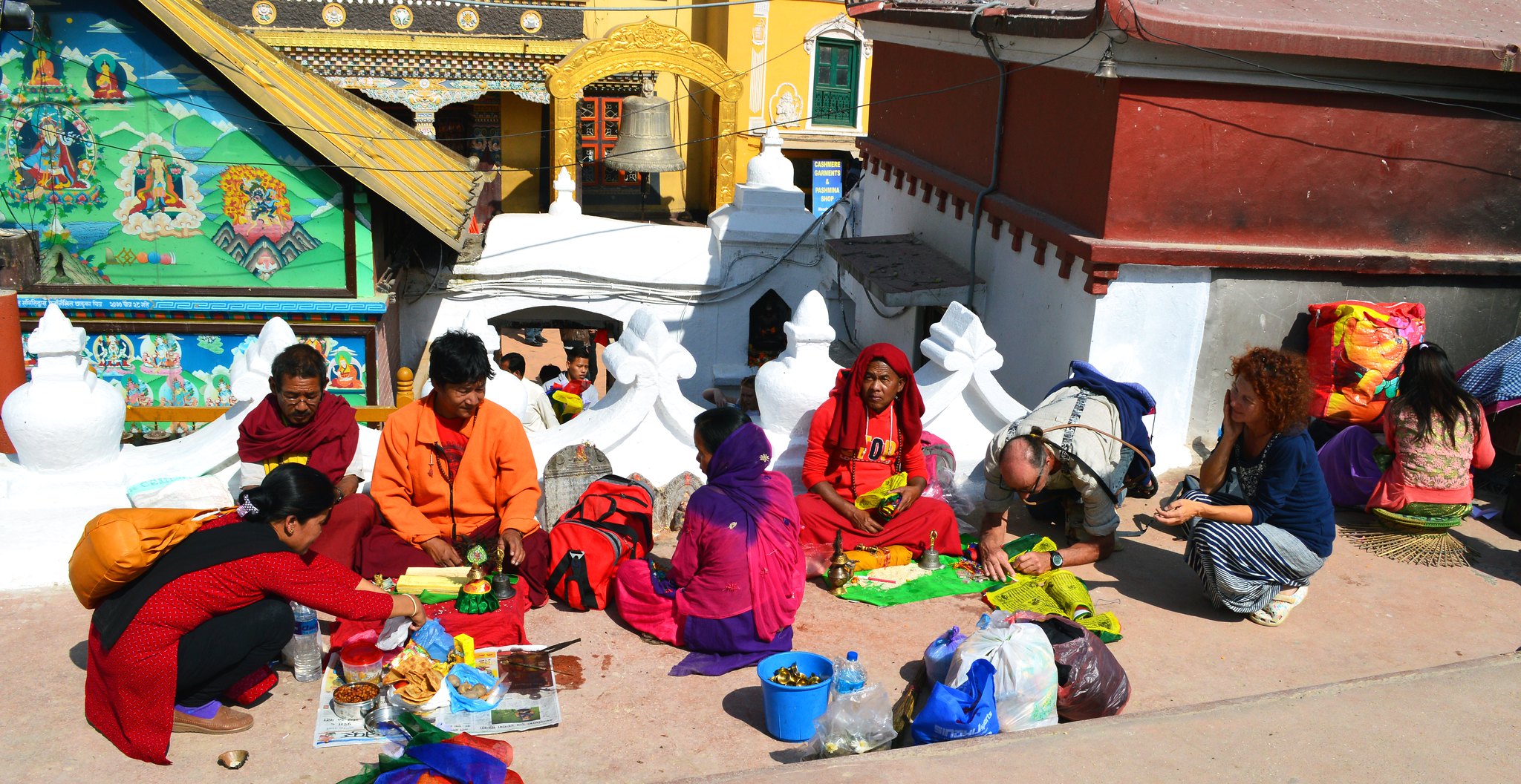
The Advantages
For developing countries, the advantages of tourism tend to be primarily monetary. A large scale tourism industry prevents larger, more harmful businesses from working off the land. Small tourist companies that reign on the land stops large capitalistic corporations from polluting the air or gentrifying people’s homes.
The tourism industry encompasses many different travel areas, which allows the majority of a country’s population to be employed . These employment places include hotels, car rental agencies, restaurants, tour companies, souvenir shops, and equipment shops, among others.
Profit earned from tourism can be reinvested into the country for better infrastructure, education, funding conservation efforts and creating more responsible ways of touring. Without tourism, many countries would not have the same level of access to education and infrastructure. Moreover, tourism allows hosts and visitors to share cultures and meet diverse groups of people. Through respectful interactions, a broader view of the world from both parties can be achieved. By reinvesting the money earned back into the country, tourism and its attractions can grow, creating a positive cycle for the country.
The Disadvantages
With the way the tourism industry is currently run, the disadvantages of tourism may greatly outweigh the advantages in a country. The first factor to take into consideration is environmental damage. When a country has a high tourist attraction, the number of people occupying a space increases immensely. As a result, the release of carbon monoxide gases can increase due to plane and car use affecting the country’s environment. Many countries with ancient ruins or natural attractions are also in danger of destruction or erosion with significant foot traffic and human interaction. Additionally, flora and fauna can decrease in areas or change their growth and migration patterns when there is an overflow of humans interact. Foot traffic and continuous touching can also slowly degrade the stability of ancient structures.
One of the advantages breached upon the sharing of cultures. While this is a great interaction of beliefs and customs, it can become destructive to a host country’s culture. One of the ways cultures can be disrespected is through the commercialization of countries’ cultures . When tourism booms, large industries swoop in and sell figures of the cultures’ icons or traditional wear, disrespecting the countries’ indigenous beliefs and can be harmful to the people living there. Moreover, poor behavior from tourists who don’t respect the spoken or unspoken codes of conduct held by indigenous peoples also undermines the sacred beliefs held within the country.
Also, for many countries, tourism is a seasonal occurrence. For people that work in the tourism industry, their jobs are only viable for a certain number of months, and after the season has ended, many are left without income. Many of these jobs also lack the benefits that other sector jobs supply. Tourism workers are often left without insurance or pension. Not to mention, foreign businesses tend to overtake the companies present in these countries, forcing small businesses to shut down. As a result, foreign businesses keep the majority of profits from tourism, while local businesses lose their income. This hurts small businesses and local economies.
As previously stated, the profit gained from tourism is often reinvested into the industry. However, with unequal infrastructure development, the tourism industry can inadvertently sustain itself without aiding a country’s other vital sectors. As such, many countries end up developing tourism hot spots while the rest of the country suffers. In these countries, there are visible socioeconomic gaps between the wealthy and the poor. Focusing mainly on the tourism industry and places of mass attraction leaves disadvantaged communities at risk of financial instability. Moreover, countries solely invested in tourism are vulnerable to quick economic falls as its working sectors are unevenly balanced. If a natural disaster, political unrest or unprecedented pandemic were to strike, the country would lose a massive income, causing an economic recession that some countries may significantly struggle to bounce back from.
Ways to Respectfully Travel
The most important step to being a respectful tourist is to be an educated tourist. Understanding and respecting the culture and the people of the country is vital. By not undermining tourism countries’ culture and beliefs, the people living there will be more welcoming to tourists, and cultures can flourish without fear of commercialization.
Being environmentally conscious is also important to the survival of these countries. Respecting a country’s land and structures preserve the countries’ beauty and keep the land clean and prepped for further development. Many countries are more environmentally strained, so reducing pollution or your carbon footprint in a foreign country can help ease the strain.
Supporting the small and local businesses found in these countries can help keep local communities employed and support the overall economy. As local businesses grow, more people will have the opportunity to be employed outside of the tourism sector, and the economy will be able to grow within itself.
By learning the advantages and disadvantages of tourism, and how one can improve the practice of traveling, the tourism industry will be able to change for the better and support the countries that host people from all over the world.
– Marlee Ingram Photo: Flickr
“The Borgen Project is an incredible nonprofit organization that is addressing poverty and hunger and working towards ending them.”
-The Huffington Post
Inside the borgen project.
- Board of Directors
Get Smarter
- Global Poverty 101
- Global Poverty… The Good News
- Global Poverty & U.S. Jobs
- Global Poverty and National Security
- Innovative Solutions to Poverty
- Global Poverty & Aid FAQ’s
Ways to Help
- Call Congress
- Email Congress
- 30 Ways to Help
- Volunteer Ops
- Internships
- Courses & Certificates
- The Podcast

10 Economic impacts of tourism + explanations + examples
Disclaimer: Some posts on Tourism Teacher may contain affiliate links. If you appreciate this content, you can show your support by making a purchase through these links or by buying me a coffee . Thank you for your support!
There are many economic impacts of tourism, and it is important that we understand what they are and how we can maximise the positive economic impacts of tourism and minimise the negative economic impacts of tourism.
Many argue that the tourism industry is the largest industry in the world. While its actual value is difficult to accurately determine, the economic potential of the tourism industry is indisputable. In fact, it is because of the positive economic impacts that most destinations embark on their tourism journey.
There is, however, more than meets the eye in most cases. The positive economic impacts of tourism are often not as significant as anticipated. Furthermore, tourism activity tends to bring with it unwanted and often unexpected negative economic impacts of tourism.
In this article I will discuss the importance of understanding the economic impacts of tourism and what the economic impacts of tourism might be. A range of positive and negative impacts are discussed and case studies are provided.
At the end of the post I have provided some additional reading on the economic impacts of tourism for tourism stakeholders , students and those who are interested in learning more.
Foreign exchange earnings
Contribution to government revenues, employment generation, contribution to local economies, development of the private sector, infrastructure cost, increase in prices, economic dependence of the local community on tourism, foreign ownership and management, economic impacts of tourism: conclusion, further reading on the economic impacts of tourism, the economic impacts of tourism: why governments invest.
Tourism brings with it huge economic potential for a destination that wishes to develop their tourism industry. Employment, currency exchange, imports and taxes are just a few of the ways that tourism can bring money into a destination.
In recent years, tourism numbers have increased globally at exponential rates, as shown in the World Tourism Organisation data below.
There are a number of reasons for this growth including improvements in technology, increases in disposable income, the growth of budget airlines and consumer desires to travel further, to new destinations and more often.

Here are a few facts about the economic importance of the tourism industry globally:
- The tourism economy represents 5 percent of world GDP
- Tourism contributes to 6-7 percent of total employment
- International tourism ranks fourth (after fuels, chemicals and automotive products) in global exports
- The tourism industry is valued at US$1trillion a year
- Tourism accounts for 30 percent of the world’s exports of commercial services
- Tourism accounts for 6 percent of total exports
- 1.4billion international tourists were recorded in 2018 (UNWTO)
- In over 150 countries, tourism is one of five top export earners
- Tourism is the main source of foreign exchange for one-third of developing countries and one-half of less economically developed countries (LEDCs)
There is a wealth of data about the economic value of tourism worldwide, with lots of handy graphs and charts in the United Nations Economic Impact Report .
In short, tourism is an example of an economic policy pursued by governments because:
- it brings in foreign exchange
- it generates employment
- it creates economic activity
Building and developing a tourism industry, however, involves a lot of initial and ongoing expenditure. The airport may need expanding. The beaches need to be regularly cleaned. New roads may need to be built. All of this takes money, which is usually a financial outlay required by the Government.
For governments, decisions have to be made regarding their expenditure. They must ask questions such as:
How much money should be spent on the provision of social services such as health, education, housing?
How much should be spent on building new tourism facilities or maintaining existing ones?
If financial investment and resources are provided for tourism, the issue of opportunity costs arises.
By opportunity costs, I mean that by spending money on tourism, money will not be spent somewhere else. Think of it like this- we all have a specified amount of money and when it runs out, it runs out. If we decide to buy the new shoes instead of going out for dinner than we might look great, but have nowhere to go…!
In tourism, this means that the money and resources that are used for one purpose may not then be available to be used for other purposes. Some destinations have been known to spend more money on tourism than on providing education or healthcare for the people who live there, for example.
This can be said for other stakeholders of the tourism industry too.
There are a number of independent, franchised or multinational investors who play an important role in the industry. They may own hotels, roads or land amongst other aspects that are important players in the overall success of the tourism industry. Many businesses and individuals will take out loans to help fund their initial ventures.
So investing in tourism is big business, that much is clear. What what are the positive and negative impacts of this?

Positive economic impacts of tourism
So what are the positive economic impacts of tourism? As I explained, most destinations choose to invest their time and money into tourism because of the positive economic impacts that they hope to achieve. There are a range of possible positive economic impacts. I will explain the most common economic benefits of tourism below.

One of the biggest benefits of tourism is the ability to make money through foreign exchange earnings.
Tourism expenditures generate income to the host economy. The money that the country makes from tourism can then be reinvested in the economy. How a destination manages their finances differs around the world; some destinations may spend this money on growing their tourism industry further, some may spend this money on public services such as education or healthcare and some destinations suffer extreme corruption so nobody really knows where the money ends up!
Some currencies are worth more than others and so some countries will target tourists from particular areas. I remember when I visited Goa and somebody helped to carry my luggage at the airport. I wanted to give them a small tip and handed them some Rupees only to be told that the young man would prefer a British Pound!
Currencies that are strong are generally the most desirable currencies. This typically includes the British Pound, American, Australian and Singapore Dollar and the Euro .
Tourism is one of the top five export categories for as many as 83% of countries and is a main source of foreign exchange earnings for at least 38% of countries.
Tourism can help to raise money that it then invested elsewhere by the Government. There are two main ways that this money is accumulated.
Direct contributions are generated by taxes on incomes from tourism employment and tourism businesses and things such as departure taxes.
Taxes differ considerably between destinations. I will never forget the first time that I was asked to pay a departure tax (I had never heard of it before then), because I was on my way home from a six month backpacking trip and I was almost out of money!
Japan is known for its high departure taxes. Here is a video by a travel blogger explaining how it works.
According to the World Tourism Organisation, the direct contribution of Travel & Tourism to GDP in 2018 was $2,750.7billion (3.2% of GDP). This is forecast to rise by 3.6% to $2,849.2billion in 2019.
Indirect contributions come from goods and services supplied to tourists which are not directly related to the tourism industry.
Take food, for example. A tourist may buy food at a local supermarket. The supermarket is not directly associated with tourism, but if it wasn’t for tourism its revenues wouldn’t be as high because the tourists would not shop there.
There is also the income that is generated through induced contributions . This accounts for money spent by the people who are employed in the tourism industry. This might include costs for housing, food, clothing and leisure Activities amongst others. This will all contribute to an increase in economic activity in the area where tourism is being developed.

The rapid expansion of international tourism has led to significant employment creation. From hotel managers to theme park operatives to cleaners, tourism creates many employment opportunities. Tourism supports some 7% of the world’s workers.
There are two types of employment in the tourism industry: direct and indirect.
Direct employment includes jobs that are immediately associated with the tourism industry. This might include hotel staff, restaurant staff or taxi drivers, to name a few.
Indirect employment includes jobs which are not technically based in the tourism industry, but are related to the tourism industry. Take a fisherman, for example. He does not have any contact of dealings with tourists. BUT he does sell his fish to the hotel which serves tourists. So he is indirectly employed by the tourism industry, because without the tourists he would not be supplying the fish to the hotel.
It is because of these indirect relationships, that it is very difficult to accurately measure the economic value of tourism.
It is also difficult to say how many people are employed, directly and indirectly, within the tourism industry.
Furthermore, many informal employments may not be officially accounted for. Think tut tut driver in Cambodia or street seller in The Gambia – these people are not likely to be registered by the state and therefore their earnings are not declared.
It is for this reason that some suggest that the actual economic benefits of tourism may be as high as double that of the recorded figures!
All of the money raised, whether through formal or informal means, has the potential to contribute to the local economy.
If sustainable tourism is demonstrated, money will be directed to areas that will benefit the local community most.
There may be pro-poor tourism initiatives (tourism which is intended to help the poor) or volunteer tourism projects.
The government may reinvest money towards public services and money earned by tourism employees will be spent in the local community. This is known as the multiplier effect.
The multiplier effect relates to spending in one place creating economic benefits elsewhere. Tourism can do wonders for a destination in areas that may seem to be completely unrelated to tourism, but which are actually connected somewhere in the economic system.

Let me give you an example.
A tourist buys an omelet and a glass of orange juice for their breakfast in the restaurant of their hotel. This simple transaction actually has a significant multiplier effect. Below I have listed just a few of the effects of the tourist buying this breakfast.
The waiter is paid a salary- he spends his salary on schooling for his kids- the school has more money to spend on equipment- the standard of education at the school increases- the kids graduate with better qualifications- as adults, they secure better paying jobs- they can then spend more money in the local community…
The restaurant purchases eggs from a local farmer- the farmer uses that money to buy some more chickens- the chicken breeder uses that money to improve the standards of their cages, meaning that the chickens are healthier, live longer and lay more eggs- they can now sell the chickens for a higher price- the increased money made means that they can hire an extra employee- the employee spends his income in the local community…
The restaurant purchase the oranges from a local supplier- the supplier uses this money to pay the lorry driver who transports the oranges- the lorry driver pays road tax- the Government uses said road tax income to fix pot holes in the road- the improved roads make journeys quicker for the local community…
So as you can see, that breakfast that the tourist probably gave not another thought to after taking his last mouthful of egg, actually had the potential to have a significant economic impact on the local community!

The private sector has continuously developed within the tourism industry and owning a business within the private sector can be extremely profitable; making this a positive economic impact of tourism.
Whilst many businesses that you will come across are multinational, internationally-owned organisations (which contribute towards economic leakage ).
Many are also owned by the local community. This is the case even more so in recent years due to the rise in the popularity of the sharing economy and the likes of Airbnb and Uber, which encourage the growth of businesses within the local community.
Every destination is different with regards to how they manage the development of the private sector in tourism.
Some destinations do not allow multinational organisations for fear that they will steal business and thus profits away from local people. I have seen this myself in Italy when I was in search of a Starbucks mug for my collection , only to find that Italy has not allowed the company to open up any shops in their country because they are very proud of their individually-owned coffee shops.
Negative economic impacts of tourism
Unfortunately, the tourism industry doesn’t always smell of roses and there are also several negative economic impacts of tourism.
There are many hidden costs to tourism, which can have unfavourable economic effects on the host community.
Whilst such negative impacts are well documented in the tourism literature, many tourists are unaware of the negative effects that their actions may cause. Likewise, many destinations who are inexperienced or uneducated in tourism and economics may not be aware of the problems that can occur if tourism is not management properly.
Below, I will outline the most prominent negative economic impacts of tourism.

Economic leakage in tourism is one of the major negative economic impacts of tourism. This is when money spent does not remain in the country but ends up elsewhere; therefore limiting the economic benefits of tourism to the host destination.
The biggest culprits of economic leakage are multinational and internationally-owned corporations, all-inclusive holidays and enclave tourism.
I have written a detailed post on the concept of economic leakage in tourism, you can take a look here- Economic leakage in tourism explained .

Another one of the negative economic impacts of tourism is the cost of infrastructure. Tourism development can cost the local government and local taxpayers a great deal of money.
Tourism may require the government to improve the airport, roads and other infrastructure, which are costly. The development of the third runway at London Heathrow, for example, is estimated to cost £18.6billion!
Money spent in these areas may reduce government money needed in other critical areas such as education and health, as I outlined previously in my discussion on opportunity costs.

One of the most obvious economic impacts of tourism is that the very presence of tourism increases prices in the local area.
Have you ever tried to buy a can of Coke in the supermarket in your hotel? Or the bar on the beachfront? Walk five minutes down the road and try buying that same can in a local shop- I promise you, in the majority of cases you will see a BIG difference In cost! (For more travel hacks like this subscribe to my newsletter – I send out lots of tips, tricks and coupons!)
Increasing demand for basic services and goods from tourists will often cause price hikes that negatively impact local residents whose income does not increase proportionately.
Tourism development and the related rise in real estate demand may dramatically increase building costs and land values. This often means that local people will be forced to move away from the area that tourism is located, known as gentrification.
Taking measures to ensure that tourism is managed sustainably can help to mitigate this negative economic impact of tourism. Techniques such as employing only local people, limiting the number of all-inclusive hotels and encouraging the purchasing of local products and services can all help.
Another one of the major economic impacts of tourism is dependency. Many countries run the risk of becoming too dependant on tourism. The country sees $ signs and places all of its efforts in tourism. Whilst this can work out well, it is also risky business!
If for some reason tourism begins to lack in a destination, then it is important that the destination has alternative methods of making money. If they don’t, then they run the risk of being in severe financial difficulty if there is a decline in their tourism industry.
In The Gambia, for instance, 30% of the workforce depends directly or indirectly on tourism. In small island developing states, percentages can range from 83% in the Maldives to 21% in the Seychelles and 34% in Jamaica.
There are a number of reasons that tourism could decline in a destination.
The Gambia has experienced this just recently when they had a double hit on their tourism industry. The first hit was due to political instability in the country, which has put many tourists off visiting, and the second was when airline Monarch went bust, as they had a large market share in flights to The Gambia.
Other issues that could result in a decline in tourism includes economic recession, natural disasters and changing tourism patterns. Over-reliance on tourism carries risks to tourism-dependent economies, which can have devastating consequences.

The last of the negative economic impacts of tourism that I will discuss is that of foreign ownership and management.
As enterprise in the developed world becomes increasingly expensive, many businesses choose to go abroad. Whilst this may save the business money, it is usually not so beneficial for the economy of the host destination.
Foreign companies often bring with them their own staff, thus limiting the economic impact of increased employment. They will usually also export a large proportion of their income to the country where they are based. You can read more on this in my post on economic leakage in tourism .
As I have demonstrated in this post, tourism is a significant economic driver the world over. However, not all economic impacts of tourism are positive. In order to ensure that the economic impacts of tourism are maximised, careful management of the tourism industry is required.
If you enjoyed this article on the economic impacts of tourism I am sure that you will love these too-
- Environmental impacts of tourism
- The 3 types of travel and tourism organisations
- 150 types of tourism! The ultimate tourism glossary
- 50 fascinating facts about the travel and tourism industry
- 23 Types of Water Transport To Keep You Afloat
Liked this article? Click to share!
Number of tourist arrivals
Somewhere on Earth this year
The World Counts • Impact through Awareness
The world counts impact through awareness, 45 arrivals every second.
There are over 1.4 billion tourists arriving at their destination every year. That’s 45 arrivals every single second.
Exponential growth of tourism
In 1950 there were 25 million international tourist arrivals, in 1970 the number was 166 million, and by 1990 it had grown to 435 million. From 1990 to 2018 numbers more than tripled reaching 1.442 billion. By 2030, 1.8 billion tourist arrivals are projected.
Negative environmental impacts of tourism
The negative environmental impacts of tourism are substantial. They include the depletion of local natural resources as well as pollution and waste problems. Tourism often puts pressure on natural resources through over-consumption, often in places where resources are already scarce.
Tourism puts enormous stress on local land use, and can lead to soil erosion, increased pollution, natural habitat loss, and more pressure on endangered species. These effects can gradually destroy the environmental resources on which tourism itself depends.
Tourism often leads to overuse of water
An average golf course in a tropical country, for example, uses as much water as 60,000 rural villagers. It also uses 1500 kilos of chemical fertilizers, pesticides and herbicides per year.
Tourism and climate change
Tourism contributes to more than 5 percent of global greenhouse gas emissions, with transportation accounting for 90 percent of this.
By 2030, a 25% increase in CO2-emissions from tourism compared to 2016 is expected. From 1,597 million tons to 1,998 million tons.
747,468,974
Tons of waste dumped
Globally, this year
1,473,783.14
Square kilometers of land area being degraded
1,501,989,182,452
Tons of freshwater used
Worldwide, this year
15,196,182,249
Tons of CO2 emitted into the atmosphere
The alternative: Eco-tourism
Eco-tourism offers a greener alternative. Eco-tourism is a rapidly growing industry, with potential benefits for both the environment and the economies of the tourist destinations.
Number of eco-tourist arrivals

- World Population
- The Consumer Economy
- Our Global Challenges
- The Project
- Keep the optimism
- Support green companies

18 Advantages and Disadvantages of Tourism
Tourism is the act of traveling for leisure, recreation, or business purposes. It involves the movement of people to destinations outside their usual environment for a certain period of time.
The purpose of this article is to examine the advantages and disadvantages of tourism, with a focus on its economic, cultural, and social effects.
The article aims to provide a comprehensive overview of the benefits and drawbacks of tourism, and to encourage readers to consider the impact of their travel on local communities and the environment.

- Redaction Team
- February 17, 2023
- Professional Development , Study in Germany
Advantages of Tourism
- Job creation and income generation : Tourism provides jobs in a variety of industries, such as hotels, restaurants, transportation, and entertainment. Tourist attractions, local businesses and historical sites can lead to increased source of income for local residents and a boost to the overall economy.
- Increase in foreign exchange : Tourism can also bring in foreign currency, as tourists typically spend money on goods and services while visiting a destination. This can help to stabilize the economy and lead to growth.
- Development of infrastructure : Tourism can also lead to the infrastructure development, such as roads, airports, and public transportation systems. This can improve the overall hospitality and quality of life for residents and make the destination more attractive to future tourists.
- Exposure to different cultures : Tourism allows people to experience different cultures and ways of life, which can broaden their perspectives and promote understanding and tolerance.
- Preservation of heritage sites : Tourism can also help to preserve tourism-related heritage sites, as the income generated by tourism can be used to fund their maintenance and restoration.
- Cultural exchange : Tourism also provides many countries opportunities for cultural exchange, as tourists and locals interact and share their customs and traditions.
- Promotion of international understanding : Tourism sector can promote international understanding by bringing people from different cultures together and fostering mutual respect and understanding.
- Increase in community involvement : Tourism can also increase community involvement, as residents may become more engaged in efforts to attract tourists and improve their destination.
- Development of tourism industry : Tourism also can lead to the development of the tourism industry, which can create hotels and places to stay, jobs and economic opportunities in a destination.
These are some examples of how tourism accounts can be beneficial and positively impact different aspects of society, however, it’s important to note that not all tourism activities are carried out in a sustainable and responsible way, which can lead to negative consequences.
Advantages of Jasper AI
- Damage to natural habitats and wildlife : Tourism can have a negative impact on the environment, as it can lead to the destruction of natural habitats and the displacement of wildlife. Activities such as excessive hiking, off-roading, and building of tourism infrastructure can generate environmental damage to natural resources.
- Pollution and waste management : Tourism can also lead to an increase in pollution and waste, as large numbers of tourists can generate a significant amount of trash, sewage, and other waste products. This can put a strain on local waste management systems and have negative impacts on the environment and generate natural disasters.
- Overcrowding of popular destinations : Popular tourist destinations can become overcrowded, which can lead to strain on local resources and the degradation of the natural environment. This can also make it difficult for tourists to fully enjoy their experience as they may feel like they are fighting for space with other visitors.
- Disruption of local communities : Tourism can disrupt local communities by altering traditional ways of life, and leading to the displacement of residents. This can cause social and cultural changes that may not be beneficial to everyone in the community.
- Exploitation of local resources and culture : Tourism can also lead to the exploitation of local resources, as well as the commercialization and commodification of local culture. This can lead to the loss of authenticity in tourist destinations and the erosion of traditional ways of life.
- Loss of authenticity in tourist destinations : Some places can become too commercialized and lose their authenticity, being transformed into tourist traps, this can lead to a loss of charm and interest for the tourists, and local residents might feel like they are living in a theme park.
- Dependence on tourism industry : A destination can become too dependent on tourism, and if the tourism industry were to decline, it could have a severe economic impact on the community.
- Widening income gap : Tourism can also lead to a widening income gap, as the benefits of tourism may not be distributed equally among all members of a community. This can lead to an increase in poverty, and social inequality.
- Inflation : Tourism can also lead to inflation, as the demand for goods and services increases, prices may rise, making it more difficult for residents to afford necessities.
Conclusion of Pros and Cons of Tourism
Tourism can bring many benefits to a destination, including economic growth, cultural exchange, and increased community involvement. However, it can also have negative impacts, such as environmental degradation, disruption of local communities, and exploitation of local resources and culture.
To minimize the negative impacts of tourism and to promote sustainable development, it is important to plan and manage tourism marketing activities in a responsible and sustainable way. This includes measures such as setting limits on the number of tourists, protecting natural habitats and wildlife, and involving local communities in tourism planning.
Overall, tourism can be a valuable tool for economic and social development, but it’s important to consider its potential negative consequences and to strive for sustainable tourism practices. This way, tourists, locals, and the environment can all benefit from tourism activities.

Privacy Overview

Pros and Cons of Tourism
Be it Niagara Falls, The Grand Canyon, or the Amazon Rainforest, these places have numerous reasons to attract tourists every year. Tourists love to visit such spots looking for fun, amusement, and even finding peace of mind. Tourism has turned into a thriving industry in many countries. Governments and local communities reap the benefits of tourism in many different ways. But those advantages come with certain risks as well. However, like everything else, there are pros and cons of tourism . You should be taking a closer look at the good and the bad of tourism before you set a vacation schedule alone or with your friends and families.
What are the Pros of Tourism?
In 2021, tourism to Grand Canyon National Park made a significant contribution of $710 million to the local economy, reports National Park Service.
1. Economic Boost
Tourism is a significant contributor to the economy of a country. By attracting tourists, nations can create sustainable revenue streams, generate job opportunities, and boost growth across several sectors. According to a report by NPS, the park welcomed approximately 4.5 million visitors to the Grand Canyon, spending an estimated $710 million in the surrounding gateway regions.
2. Cultural Exchange
Travel can bring people together and provide a unique opportunity to share ideas and experiences. Travelers often have an open mind about different cultures and customs, so they are eager to explore new places. This type of exchange can break down cultural barriers between countries by allowing each party to understand the other's culture better. This exchange of cultural values can be counted as one of the major advantages of tourism.
3. Environmental Conservation
All natural heritages are tourist spots, and people come to admire the view. One of the significant advantages of tourism is that it can help protect and preserve the environment. Local governments can invest the revenue generated by tourism for the betterment of environmentally sensitive regions and areas with fragile ecosystems.
4. Improved Infrastructure is Among the Pros of Tourism
With the influx of tourists, countries can consider upgrading their infrastructure to accommodate visitors' needs. This includes constructing new airports, roads, accommodations, and public facilities such as parks and museums. This positive change can be felt both by the tourists and the inhabitants.
5. Global Recognition
Tourism is an essential part of many countries economies, and it can also provide significant global recognition for the destination. A well-designed tourism strategy that attracts a high volume of international visitors can bring in foreign money, create jobs, and help to develop infrastructure. It also raises awareness about an area, leading to increased interest from the rest of the world.
What are the Cons of Tourism?
Besides the positive changes, tourism also has its share of downsides. Most of the cons of the tourism industry are associated with the misuse of natural resources. Some of the other problems with tourism include:
1. Environmental Damage
Tourism can lead to environmental damage in many ways. For example, it can impact water resources through increased water and wastewater production demand. It can also add to pollution by generating emissions from transportation as visitors travel around the area. Additionally, tourists may increase pressure on local land resources, leading to deforestation and loss of habitats for native species.

2. Displaced Communities
Tourism often brings economic benefits to local communities. Still, when done in a way that does not consider the local community's needs and aspirations, it can cause displacement. Communities may be displaced from their traditional lands or homes, pushing them away from the resources they need for subsistence. This can be particularly detrimental if these resources are already scarce or difficult to access.
3. Cultural Erosion
Cultural Erosion is one of the most dreaded cons of tourism. A tourist destination with a distinct local culture is prone to changes due to the influx of tourists. The more tourism activities are higher the chances of community displacement.
This phenomenon is often compounded by the fact that many tourists come from cultures very different to those of the local community, and their presence can lead to a sudden change in cultural values. This rapid transition can significantly damage a community as its members may no longer feel represented or respected.
4. Economic Dependence
The COVID-19 pandemic best explains how tourism can suddenly burden an economy. As the pandemic wiped out all income for many countries' businesses, many had to rely heavily on government support and bailouts as their primary sources of revenue. This has resulted in rising debts due to emergency aid distributions and other fiscal measures associated with relief during this crisis.
5. Overcrowding
Visiting a particular area can harm the environment and local culture as tourism grows. One of the main disadvantages of tourism is overcrowding, which can strain resources, increase pollution, and damage natural habitats.
Overcrowding can decrease the quality of life for residents, as tourists take up public space and resources. It can also affect the health and safety of visitors who may be exposed to increased levels of crime or air pollution.
Conclusion on the Pros and Cons of Tourism
The pros and cons of tourism are complex if you evaluate them thoroughly. It is easy to see that people benefit from increased access to new cultures, experiences, and destinations.
On the other hand, there are real risks associated with tourist activities like over-tourism and the destruction of natural spaces. Therefore, it's up to individuals to assess these impacts on their own terms. It's up to every citizen to become responsible travelers who understand tourism's positive and negative effects.
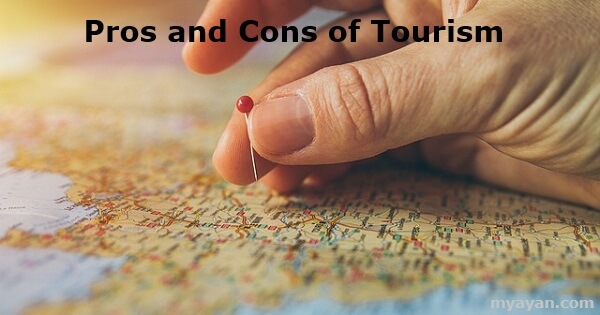
Frequently Asked Questions
What are the cons of tourism.
Tourism frequently exerts excessive strain on natural resources due to overconsumption, particularly in areas with limited resources. It places immense pressure on local land utilization, resulting in soil erosion, heightened pollution levels, loss of natural habitats, and increased jeopardy for endangered species.
What are the pros of tourism?
It fosters job creation, bolsters the local economy, facilitates infrastructure development, preserves the natural environment and cultural heritage, and works towards alleviating poverty and inequality.
What are the social benefits of tourism?
Tourism brings forth numerous social benefits, showcasing its positive impacts on society. These encompass the preservation of local culture and heritage, the fostering of vibrant communities, the provision of essential social services, the promotion of cultural and artistic commerce, the revitalization of customs and art forms, as well as the safeguarding of our precious heritage.
Who does tourism help?
Tourists contribute to the local economy by spending their money, leading to job creation and economic growth. This support is particularly crucial for small businesses, which often struggle to generate substantial profits.
What's your reaction?
Quick links.
- » Home
- » About us
- » Contact us
- » Post Article
- » Privacy policy
- » Terms and Conditions
- » Health and Wellness
- » Education and Communication
- » Computers and Electronics
- » Personal Care and Style
- » Travel Updates and Tourism Guide
- » Finance and Business Sector
- » Food and Entertainment
- » Home and Garden
- » Automobiles Sector
Tourism; Pros and Cons, Facts and Environmental Impact.
- by Ahsen Soomro
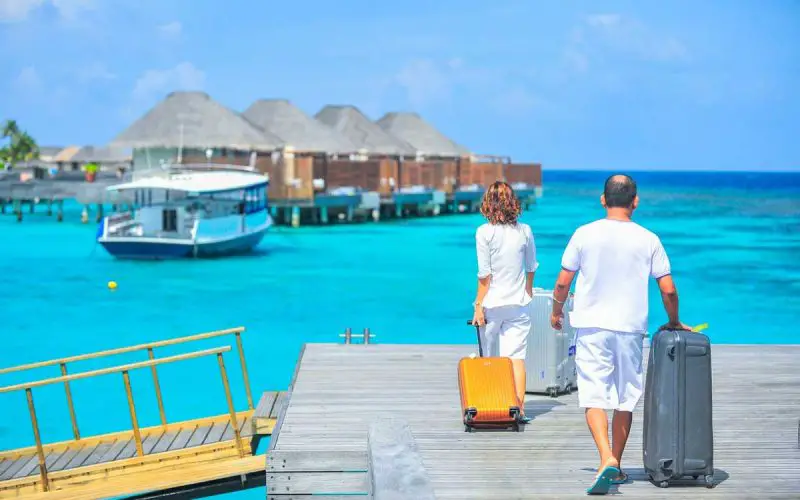
Table of Contents Show
1. wealth generation, 2. the progression of a country, 3. creation of jobs, 4. unity among different societies, 5. conservation, 6. improves geographical identity worldwide, 7. damage to the environment by tourists, 8. exploitation of local culture, 9. non-compliance of tourists, 10. lack of job security/seasonal only, 11. confined to service jobs, 12. unequal infrastructure growth, 13. foreign business owners, 14. neglecting of other sectors, 5+ fun facts on tourism, environmental damage, invasive organisms, negative impact on wildlife, loss of natural resources, challenging stereotypes, gaining cultural sensitivity, authentic experience of cultures.
Tourism is the department or an organization that facilitates people to allow them to visit or spend vacations at places they like.
Tourism is one of the most important industries in any country. It is a large contributor to the economy of a country as it can provide revenue throughout the year. Tourism helps in keeping the employment rate of countries stable as several job opportunities are created due to the tourism industry.
Sometimes, tourism can be a major source of foreign income for the country. This is like Maldives where 40% of the economy is generated from the Tourism industry.
This transaction doesn’t only facilitate the vacation or relaxation of tourists visiting these regions, but also helps to provide a better livelihood to everyone involved in the tourism sector.
Developed countries like USA and UK have greatly benefitted from medical tourism. Medical tourism involves people travelling to developed countries to get treatments unavailable in their home country. These are usually people from developing countries with sub-standard health care. You can also call them a medical tourist !
However, even with the great number of benefits of tourism, there are several drawbacks to it. These disadvantages are sometimes ignored by the tourism sector of that country as their sole purpose becomes profit. We must consider all aspects of tourism which include environmental responsibilities, profit and sustainability.
Today, we will look at some of the Pros and Cons of Tourism;
Advantages of Tourism
One of the major advantages of Tourism is a constant flow of cash. It is very important not just for the economy of the country as a whole but for all those working in the tourism sectors.
Commercial and private airlines operating from these countries tend to make a ton of revenue as people from around the world fly to a tourist attraction. Hotels and guest homes in the hospitality industry make a constant income as travelers flood hotel lobbies looking for a place to stay. This makes sure hotels make money throughout the year.
These small sectors, that come under the umbrella of tourism help to generate money for the country throughout the year. This cash flow is even more essential for small, developing, and third world nations as for some of them the tourist sector might be the biggest contributor to their local economy.
As wealth influx starts in the country, it helps the government to procure necessary funds for development and progression of the country. The tourism sector gives security and stability to the economy of the nation, preventing it from tanking in times of crisis.
The government also gets necessary funds to carry out large scale infrastructure projects like restaurants, hotels, casinos and theater which may further improve the tourism sector, providing more places for travelers to stay and more activities to indulge in. This will help to generate further cash influx.
Other than that, this wealth can also be used to improve the infrastructure of the country. This includes building roads, rail roads, better hospitals and education centers for natives as well as the tourists.
Tourism has provided various jobs to people who were previously unemployed. The natives gifted with constant stable jobs have greatly improved their livelihood ( there is a possible catch to this, I’ve explained in the cons ).
These jobs include working in areas such as hotels, restaurants, bars, casinos, theatres, zoos, parks, entertainment facilities, and more. Some of those you might remember from your last trip, especially the travel agent who booked your tickets or the tour operator who ensured that your trip went smooth or the captain of your cruise ship in the Caribbean. They work relentlessly, away from their families, to make sure you enjoy your vacations.
This has also led to the overall reduction of unemployment in the country, thus reducing burden on the government.
Did you know? 1 in 10 jobs are supported by Tourism industry across the world!
The unique feature of tourism is that it helps to create unity among people from different countries, cultures, backgrounds, traditions, and ethnicities who are all visiting to have some fun.
It allows people to learn different histories, traditions, cultures, diets, and lifestyles of the nations they are visiting. This helps to create understanding and oneness among people which can have a long-lasting impact socially.

Cross-cultural connections are developed as the natives interact with the tourists and may lead to further large-scale collaborations as well!
The main star of attraction for tourists visiting a country is its historical sites and landscapes, particularly the landmarks of the country. These landmarks may be in the form of churches, mosques, cathedrals, monuments, buildings, skyscrapers, beaches, amusement parks, and other attractions to say the least.
This means it becomes the government’s utmost priority to conserve these sites, for the tourism industry to be sustainable.
The government carries out regular maintenance of such areas and rules are placed concerned with damaging or vandalism of the property in order to protect these spots. Once these areas become a part of the tourism sector, they are no less than a cash generator for the country.
Tourists often go back home and praise about the vacation that they had. Every person that goes back home brags to at-least 10 more people about the wonderful vacation they had, usually through social media. This allows more people to know more about the country and helps it earn its name and make a place for itself on the map!
Increased recognition leads to further foreign investment and development, followed with increased tourism activity in the area.
Major Cons of Tourism
When it comes to tourism thousands of people may visit, even millions in some spots. This high influx of tourists can lead to immense environmental destruction, especially in destinations where tourists are more prone to visit.
This environmental burden is not solely due to the high influx of tourists, but it is associated with various other factors working together to bring environmental harm.
These factors include increased presence and use of cars, buses, trains, and other vehicles which may raise carbon emissions. A large number of flights at the airport could become a large contributor of air pollution as well.
Tourists can cause a lot of land pollution; as they throw a massive amount of garbage and waste, which is mostly non-biodegradable, leading to a massive number of landfills. All these activities may combine to greatly impact the environment of the region.
Soil erosion, Different kinds of Pollution , habitat loss and destruction as well as forest fires are just some of the environmental effects of tourism.
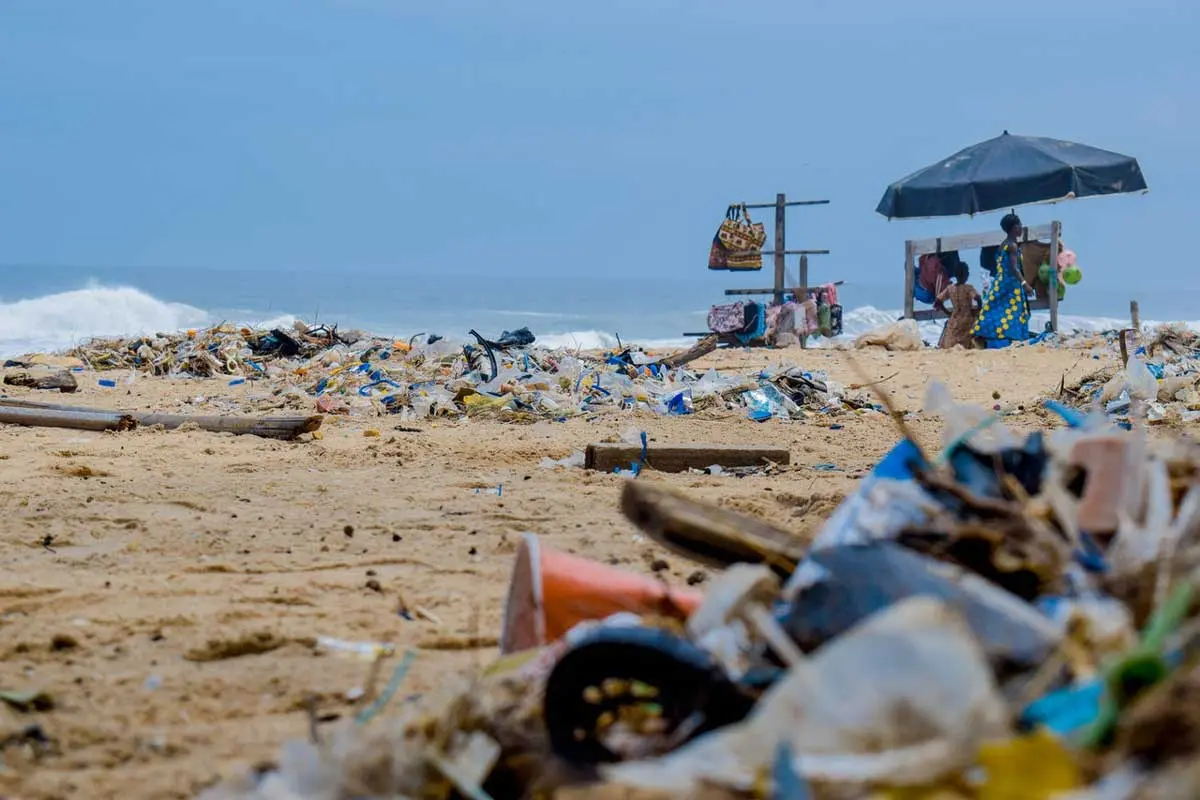
If these regions are not conserved and taken care of properly, they will lose their natural essence and subsequently be abandoned by tourists. This can lead to permanent damage of the natural tourist attractions!
Fortunately, we have been observing a rise in demand of sustainable tourism. We’ll be discussing that very soon.
Some countries, seeing the vast amount of tourists coming in their country to observe their unorthodox lifestyle and traditions, begin to commercialize their culture. It can be in the form of souvenirs. Usually, the natives are not offended by this.
However, in some regions this can be considered an outright disgrace and mocking of their culture. This is especially true for the regions where locals consider their culture to be their identity. Commercializing may result in people just wearing costumes and exhibiting traditions just to entertain tourists. Observing that the governments are using their culture as a tool for profiteering can cause them to feel sad and ridiculed by their nation.
Sometimes, tourists do not honor cultures and traditions of countries/regions they visit. They may break certain rules and unspoken codes of conduct to which the locals have very high regard. Tourists get drunk in public and do horrendous acts at times. This creates certain hatred among the locals for the incoming tourists.
Racist remarks by tourists and the socioeconomic gap between the tourists and the natives may further exacerbate the issue. The tourists may consider themselves in much higher regard than the natives. Such thoughts may provoke the tourists to act wildly and unlawfully, and sometimes even end up mocking the nation.
Look at it this way; if you go to a friend’s house, you don’t outright break stuff at his home or start shouting remarks to his/her family. You respectfully meet your friend and have a good time, in good spirits. That’s the way you should treat natives when you’re visiting another country, because you’re visiting their home !
Although we did mention that tourism leads to an increase in the employment rate; sometimes these jobs can be seasonal depending on the region and hence, cannot be a dependable income throughout the year. This is more concerning in countries that have specific durations and seasons of high influx of tourists from around the world. These seasonal jobs, hence, offer minimal job security and employees can be left without a proper pension or insurance.
Although tourism generates jobs for locals, most of these jobs are confined to service industry with minimal wages. These low-wage and minimum-skill workers have little ambition to promotion and getting higher up the chain.
Massive income generated from tourism offers countries to build upon infrastructure of the tourist destination only. Sadly, the countries do not use the revenue generated from this infrastructure to build and develop other regions which require maintenance and development.
The wealth generated from tourism is put back into tourism-related things and regions that desperately need improvement are constantly neglected. The locals who don’t live in tourist-economy regions are neglected which leads to imbalance of infrastructure development.
Sometimes most of the places which are heavily infiltrated by tourists are owned by foreign businesses. This means most of the profits and money coming into the country are being used by foreigners thereby causing significant loss of local businesses.
Local industries miss out on the primary source of income that is required for them to stay afloat and to grow. This can lead to businesses going bankrupt and losing, overall damaging the country’s economy.
Countries see that tourist is the major source of income for them, tend to ignore other various sectors upon which they are built. This leads to nations neglecting these sectors, thus causing a loss of income, jobs, and growth amongst these sectors. The country aims to put all of its resources in one basket which is the tourism industry, will leaving all others behind for them to crumble and diminish.
This over-reliance on a specific sector for the stability of the nations can sometimes cause a massive impact, especially during times of war, political instability, or natural disasters as it will be led to the long term closure of the tourism of those countries due to unrest. This can eventually drain the country down as its only resource which is tourism is no longer function, and it didn’t have any other sector nor did they built any other sector in a way for them to become sustainable in times of economic crisis.
- Tourism is responsible for 5% of the Global GDP!
- China stays as the world’s top tourism spender, spending more than 260 Billion Dollars!
- Global tourism industry being the largest industry contributes more than 7.5 trillion dollars in the world economy.
- Almost 10% of world’s jobs are sourced from Tourism Industry.
- Tourists spend the most cash in Dubai. Around 28.5 Billion dollars yearly!
- Osaka in Japan is emerging as the hottest tourist spot in the world.
Negative Environmental Impacts of Tourism
The government may choose to put the wealth generated from tourism into preservation of the environment. However, tourism still goes on to put sufficient burden on the natural resources of our planet and prompts over-consumption of natural resources in regions with already limited resources.
Once tourism becomes unsustainable, the surrounding environment starts to deteriorate. Tourism has a wide impact on the air quality, vegetation, water supply, wildlife, and the natural ecosystems of the region.
Most of the tourist activities have a negative impact on ecosystems. These include fishing, hiking, and snorkeling; all of which tend to affect and deplete the local scenery.
To run a tropical golf course for tourists requires water that can feed up to 60,000 locals. There is a trail in the Himalayas known as “the toilet paper trail” which shows how much damage tourism has caused to the environment.
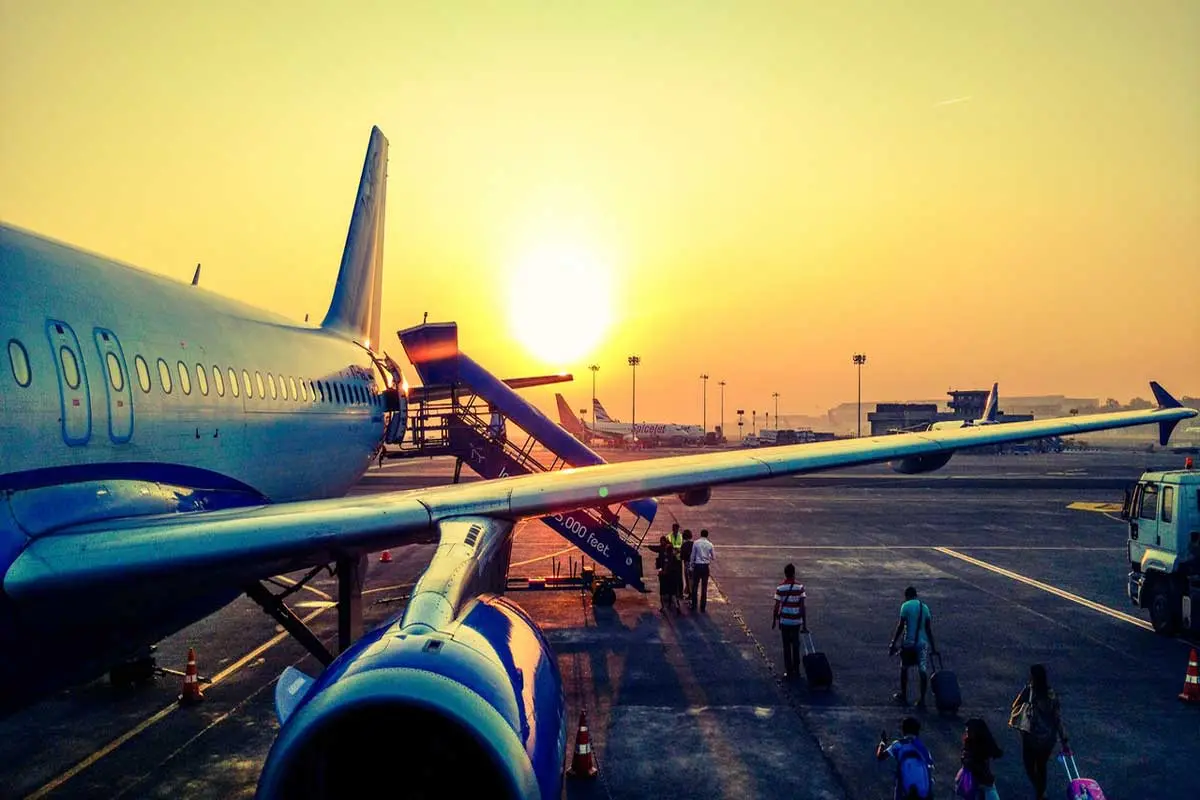
Once there is an influx of tourists to a common destination, there is an overuse of transportation systems which heavily contributes to pollution (Mainly air pollution). Tourism accounts for 60% of air travel worldwide, and flying one mile in a plane can produce 53 pounds of carbon dioxide.
Even travelers conscious of hurting the environment also cause a negative impact. Tourists that travel to natural sites located remotely, tend to cause damage to natural ecosystems they come to see.
The increased human presence on many geographical regions can alter the number of native plants in the region and introduce non native species in those areas.
Even species brought in as pets into the country are sometime released into the wild and could bring havoc upon the ecosystem if they turned out to be invasive species.

Human intervention and presence can disrupt food webs, ecological communities, and harm keystone species in an area. Others take an active approach and hunt foreign animals as a tourist activity. They can also damage the natural habitat of native wildlife by engaging with it. All of these contribute to wildlife endangerment and extinction.
Tourism can shrink the natural resources by causing over-consumption. This is particularly damaging in areas with food and water scarcity.
This may also lead to hatred among the locals for tourists who use up the limited water supply for luxuries. A natural resource like water could be used to fill up Jacuzzis at a 5-star hotel but could much better be used in feeding a child who suffers from dehydration.
Cultural Benefits of Traveling

When you get to visit another country and observe their culture, you get the opportunity to be exposed to unfamiliar perspectives and traditions and gain a more broad, much informed, and kinder view of the locals and places you encounter.
Perceptions and stereotypes might be replaced by first hand view of the people by the tourists themselves.
People get to see traditions and learn manners of different cultures. Manners and etiquette tourists may not have practiced in their native countries.
Pointing with your index fingers at the indigenous people, showing excessive skin, wearing shoes indoors, and making noises may be considered rude in some places.
So it is important to do a little bit of research on the local customs and traditions before visiting so you can try to avoid being offensive or inappropriate.
It can be a wonderful way to experience the insights of a different culture through the experience of traditions, rituals, festivals, celebrations, and rites. It gives the visitor a chance to understand the cultural heritage of a region much more deeply.
Tourism has its benefits to the economy but the environmental component of tourism shouldn’t be ignored. Think about that the next time you book your tickets. We are also working on reducing your environmental footprint when you travel…Can’t reveal more. Stay tuned!
For now I’d like to leave this picture for you to ponder about Eco-tourism.

Ahsen Soomro
My love for nature is not newfound. I have lived on the countryside for over a decade of my life where I realized how human activities impacted the environment. Later during my stint in medical school, I realized that many of our health concerns originate from neglecting our environmental responsibilities and this was just not sustainable in the long run. Raising awareness, not locally but globally, was the mission. This led to the foundation of EnvironmentBuddy!
Leave a Reply Cancel reply
Your email address will not be published. Required fields are marked *
Differences between Deforestation, Afforestation and Reforestation!
Afforestation; importance, advantages & disadvantages. current efforts, you may also like.

- 8 minute read
10 Organic DIY Body Scrubs For Spa Day at Home!

- 5 minute read
The Negativity of Consumerism
- No comments

- 12 minute read
41 Best Ways to Conserve Natural Resources

- 11 minute read
19 Amazing Lilies And The Exciting Types

- 10 minute read
Earthship Designs, Importance, pros and cons + DIY kit.

Insect House: Purpose, Benefits, Importance, DIY kit
Overtourism Effects: Positive and Negative Impacts for Sustainable Development
- Living reference work entry
- First Online: 02 October 2020
- Cite this living reference work entry

- Ivana Damnjanović 7
Part of the book series: Encyclopedia of the UN Sustainable Development Goals ((ENUNSDG))
284 Accesses
1 Citations
Responsible tourism ; Tourism overcrowding ; Tourism-phobia ; Tourist-phobia
Definitions
Tourism today is paradoxically dominated by two opposite aspects: its sustainable character and overtourism. Since its creation by Skift in 2016 (Ali 2016 ), the term “overtourism” has been a buzzword in media and academic circles, although it may only be a new word for a problem discussed over the past three decades.
Overtourism is a complex and multifaceted phenomenon destructive to tourism resources and harmful to destination communities’ well-being through overcrowding and overuse (Center for Responsible Travel 2018 ; International Ecotourism Society 2019 ) as certain locations at times cannot withstand physical, ecological, social, economic, psychological, and/or political pressures of tourism (Peeters et al. 2018 ). Overtourism is predominantly a problem producing deteriorated quality of life of local communities (Responsible Tourism n.d. ; The International Ecotourism Society 2019 ; UNWTO 2018...
This is a preview of subscription content, log in via an institution to check access.
Access this chapter
Institutional subscriptions
Ali R (2016) ‘Exploring the coming perils of over tourism’, Skift, 23-08-2016 (online). Available at: www.skift.com (10-09-2019)
Google Scholar
Bowitz E, Ibenholt K (2009) Economic impacts of cultural heritage – research and perspectives. J Cult Herit 10(1):1–8. https://doi.org/10.1016/j.culher.2008.09.002
Article Google Scholar
Center for Responsible Travel – CREST (2018) The case for responsible travel: Trends & Statistics 2018. Retrieved from https://www.responsibletravel.org
Center for Responsible Travel – CREST (n.d.) Center for Responsible Travel. Retrieved 11 Sept 2019, from https://www.responsibletravel.org/
Cheer JM, Milano C, Novelli M (2019) Tourism and community resilience in the anthropocene: accentuating temporal overtourism. J Sustain Tour 27:554–572. https://doi.org/10.1080/09669582.2019.1578363
Croes R, Manuel A, Rivera KJ, Semrad KJ, Khalilzadeh J (2017) Happiness and tourism: evidence from Aruba. Retrieved from the dick pope Sr. Institute for Tourism Studies website. https://doi.org/10.13140/RG.2.2.29257.85602
Epler Wood M, Milstein M, Ahamed-Broadhurst K (2019) Destinations at risk: the invisible burden of tourism. The Travel Foundation
Giulietti, S., Romagosa, F., Fons Esteve, J., & Schröder, C. (2018). Tourism and the environment: towards a reporting mechanism in Europe (ETC/ULS report |01/2018). Retrieved from European Environment Agency website: http://www.sepa.gov.rs/download/strano/ETC_TOUERM_report_2018.pdf
Global Sustainable Tourism Council – GSTC (2017) Official website. Retrieved August 23, 2019, from https://www.gstcouncil.org/
Goodwin, H. (2017) The challenge of overtourism (working paper). Responsible tourism partnership. Available at https://haroldgoodwin.info/pubs/RTP'WP4Overtourism01'2017.pdf
Interagency Visitor Use Management Council (2016) Visitor use management framework: a guide to providing sustainable outdoor recreation, 1st edn
Jordan P, Pastras P, Psarros M (2018) Managing tourism growth in Europe: the ECM toolbox. Retrieved from European Cities Marketing website: https://www.ucm.es/data/cont/media/www/pag-107272/2018-Managing%20Tourism%20Growth%20in%20Europe%20The%20ECM%20Toolbox.pdf
Kim D, Lee C, Sirgy MJ (2016) Examining the differential impact of human crowding versus spatial crowding on visitor satisfaction at a festival. J Travel Tour Mark 33(3):293–312. https://doi.org/10.1080/10548408.2015.1024914
Leung Y, Spenceley A, Hvenegaard G, Buckley, R, Groves C (eds) (2018) Tourism and visitor management in protected areas: guidelines for sustainability. Best practice protected area guidelines series, vol 27. IUCN, Gland. Retrieved from https://doi.org/10.2305/IUCN.CH.2018.PAG.27.en
Li L, Zhang J, Nian S, Zhang H (2017) Tourists’ perceptions of crowding, attractiveness, and satisfaction: a second-order structural model. Asia Pac J Tour Res 22(12):1250–1260. https://doi.org/10.1080/10941665.2017.1391305
Milano C (2017) Overtourism and tourismphobia: global trends and local contexts. Retrieved from Barcelona: Ostelea School of Tourism and Hospitality website. https://doi.org/10.13140/RG.2.2.13463.88481
Book Google Scholar
Milano C, Novelli M, Cheer JM (2019) Overtourism and tourismphobia: a journey through four decades of tourism development, planning and local concerns. Tour Plan Dev 16(4):353–357. Retrieved from. https://doi.org/10.1080/21568316.2019.1599604
Muler Gonzalez V, Coromina L, Galí N (2018) Overtourism: residents’ perceptions of tourism impact as an indicator of resident social carrying capacity – case study of a Spanish heritage town. Tour Rev 73(3):277–296. https://doi.org/10.1108/tr-08-2017-0138
Oklevik O, Gössling S, Hall CM, Steen Jacobsen JK, Grøtte IP, McCabe S (2019) Overtourism, optimisation, and destination performance indicators: a case study of activities in fjord Norway. J Sustain Tour:1–21. https://doi.org/10.1080/09669582.2018.1533020
Peeters P, Gössling S, Klijs J, Milano C, Novelli M, Dijkmans C, Eijgelaar E, Hartman S, Heslinga J, Isaac R, Mitas O, Moretti S, Nawijn J, Papp B, Postma A (2018) Research for TRAN committee – overtourism: impact and possible policy responses. European Parliament, Policy Department for Structural and Cohesion Policies, Brussels
Perkumienė D, Pranskūnienė R (2019) Overtourism: between the right to travel and residents’ rights. Sustainability 11(7):21–38. https://doi.org/10.3390/su11072138
Popp M (2012) Positive and negative urban tourist crowding: Florence, Italy. Tour Geogr 14(1):50–72. https://doi.org/10.1080/14616688.2011.597421
Responsible Tourism (n.d.) Over Tourism (online). Available at: www.responsibletourismpartnership.org/overtourism
Seraphin H, Sheeran P, Pilato M (2018) Over-tourism and the fall of Venice as a destination. J Destin Mark Manag 9:374–376. https://doi.org/10.1016/j.jdmm.2018.01.011
Souza T, Thapa B, Rodrigues CG, Imori D (2018) Economic impacts of tourism in protected areas of Brazil. J Sustain Tour 27(6):735–749. https://doi.org/10.1080/09669582.2017.1408633
Spenceley A, Snyman S, Rylance A (2017) Revenue sharing from tourism in terrestrial African protected areas. J Sustain Tour 27(6):720–734. https://doi.org/10.1080/09669582.2017.1401632
The International Ecotourism Society (2019) Ecotourism is the solution to Overtourism. Retrieved 10 Sept 2019, from https://ecotourism.org/news/ecotourism-is-the-solution-to-overtourism/
The Travel Foundation. (2016). What is sustainable tourism? . Retrieved 13 July 2020, from https://www.thetravelfoundation.org.uk/resources-categories/what-is-sustainable-tourism/
Thomas, C. C., Koontz, L., and Cornachione, E. (2018). 2017 National park visitor spending effects: economic contributions to local communities, states, and the nation. Retrieved from U.S. Department of the Interior, National Park Service website: https://www.nps.gov/nature/customcf/NPS_Data_Visualization/docs/NPS_2017_Visitor_Spending_Effects.pdf
UN World Tourism Organization (2018a) Tourism for SDGs platform. Retrieved 13 Sept 2019, from http://tourism4sdgs.org/
UN World Tourism Organization (2018b) Measuring sustainable tourism. Retrieved from http://statistics.unwto.org/mst
UN World Tourism Organization (2018c) UNWTO tourism highlights, 2018 edition. UNWTO, Madrid, p 4. https://doi.org/10.18111/9789284419876
UN World Tourism Organization; Centre of Expertise Leisure, Tourism & Hospitality; NHTV Breda University of Applied Sciences; and NHL Stenden University of Applied Sciences (2018d), ‘Overtourism’? – Understanding and Managing Urban Tourism Growth beyond Perceptions, Executive Summary, UNWTO, Madrid. https://doi.org/10.18111/9789284420070
UN World Tourism Organization (2019). ‘Key tourism figures’, infographic (online). Available at http://www2.unwto.org
UN World Tourism Organization; Centre of Expertise Leisure, Tourism & Hospitality; NHTV Breda University of Applied Sciences; and NHL Stenden University of Applied Sciences (2018) ‘Overtourism’? – understanding and managing urban tourism growth beyond perceptions, executive summary. UNWTO, Madrid. https://doi.org/10.18111/9789284420070
UNEP and UNWTO (2005) Making tourism more sustainable: a guide for policy makers. World Tourism Organization Publications, Madrid
United Nations (2018) About the sustainable development goals. Retrieved 13 Sept 2019, from http://www.un.org/sustainabledevelopment/sustainable-development-goals/
UNWTO (2004) Tourism congestion management at natural and cultural sites. World Tourism Organization Publications, Madrid
Waller I (2011) Less law, more order. Acta Criminologica South Afr J Criminol 24(1):I–IV. Retrieved from https://hdl.handle.net/10520/EJC29060
World Travel & Tourism Council (2019) Global Economic Impact & Trends 2019 (march 2019). Available at https://www.wttc.org/economic-impact/country-analysis/
World Travel & Tourism Council (WTTC) and McKinsey Company (2017) Coping with success: managing overcrowding in tourism destinations. Retrieved from https://www.wttc.org/-/media/files/reports/policy-research/coping-with-success%2D%2D-managing-overcrowding-in-tourism-destinations-2017.pdf
WWF – World Wide Fund For Nature (2019) Blue planet: coasts. Retrieved 12 Sept 2019, from http://wwf.panda.org/our_work/oceans/coasts/
Zehrer A, Raich F (2016) The impact of perceived crowding on customer satisfaction. Retrieved from. https://doi.org/10.1016/j.jhtm.2016.06.007
Download references
Author information
Authors and affiliations.
Faculty of Health and Business Studies, Singidunum University, Valjevo, Serbia
Ivana Damnjanović
You can also search for this author in PubMed Google Scholar
Corresponding author
Correspondence to Ivana Damnjanović .
Editor information
Editors and affiliations.
European School of Sustainability, Hamburg University of Applied Sciences, Hamburg, Hamburg, Germany
Walter Leal Filho
Center for Neuroscience & Cell Biology, University of Coimbra, Coimbra, Portugal
Anabela Marisa Azul
Faculty of Engineering and Architecture, Passo Fundo University Faculty of Engineering and Architecture, Passo Fundo, Brazil
Luciana Brandli
HAW Hamburg, Hamburg, Hamburg, Germany
Amanda Lange Salvia
International Centre for Thriving, University of Chester, Chester, UK
Section Editor information
Department of Health Professions, Manchester Metropolitan University, Manchester, UK
Haruna Musa Moda
Rights and permissions
Reprints and permissions
Copyright information
© 2020 Springer Nature Switzerland AG
About this entry
Cite this entry.
Damnjanović, I. (2020). Overtourism Effects: Positive and Negative Impacts for Sustainable Development. In: Leal Filho, W., Azul, A.M., Brandli, L., Lange Salvia, A., Wall, T. (eds) Industry, Innovation and Infrastructure. Encyclopedia of the UN Sustainable Development Goals. Springer, Cham. https://doi.org/10.1007/978-3-319-71059-4_112-1
Download citation
DOI : https://doi.org/10.1007/978-3-319-71059-4_112-1
Received : 10 October 2019
Accepted : 16 October 2019
Published : 02 October 2020
Publisher Name : Springer, Cham
Print ISBN : 978-3-319-71059-4
Online ISBN : 978-3-319-71059-4
eBook Packages : Springer Reference Earth and Environm. Science Reference Module Physical and Materials Science Reference Module Earth and Environmental Sciences
- Publish with us
Policies and ethics
- Find a journal
- Track your research
- Partners and Fundings
- events & news
- green hotels
- who’s talking about us
Overtourism: Causes, Consequences and Solutions
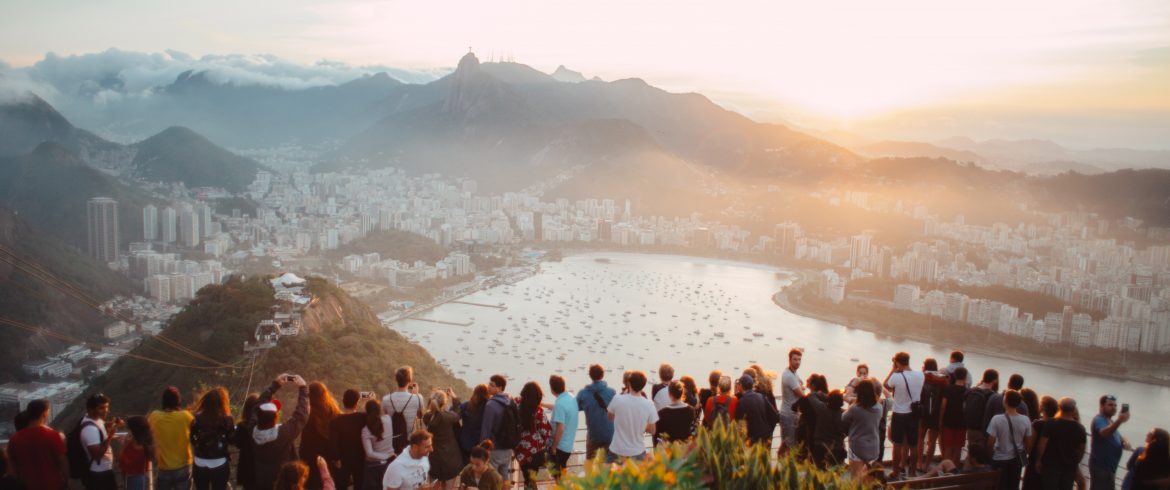
Overtourism : one of the words that people use most in recent years. In effect, more and more often, tourist destinations suffer from overtourism, tourism overcrowding . Places that everyone wants to see because they are “famous”. Movie scenes shot in locations (such as Lake Braies ) that now attract hordes of tourists looking for a short trip. Simply, they stop the time for a selfie and then leave for the next famous stage. This type of mass tourism causes pollution, the devastation of nature and distress of local populations. Let’s see in detail what is overtourism, what are its causes , what are the consequences , and what can be done to avoid it.
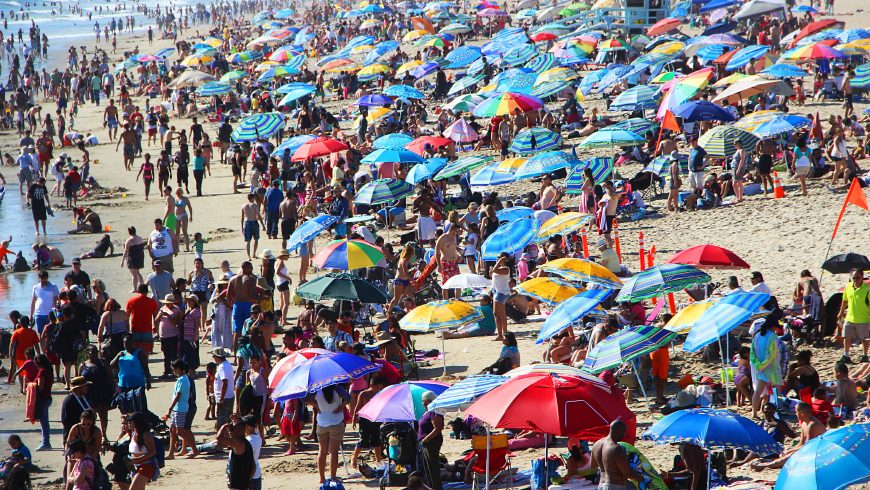
What is overtourism?
Overtourism is a neologism that indicates the overcrowding of tourists on a holiday destination. The term was first inserted in the Oxford dictionary in 2018 and nominated as the year’s word. Overtourism, literally “too much tourism” , is a complex phenomenon that we should analyze from various points of view. In essence, we could sum up the concept in one question. Is this place affected by the presence of more tourists than the place and the inhabitants can support?
When it comes to natural tourist destinations , tourism must respect flora, fauna, and microclimate. When the destination is a city , tourism must primarily r espect residents , as well as local culture and archaeological sites . The latter in particular are small microcosms blocked in time that tourism should protect. If this doesn’t happen, we talk about overtourism, or unsustainable tourism for the place, for nature, for the people who live there.
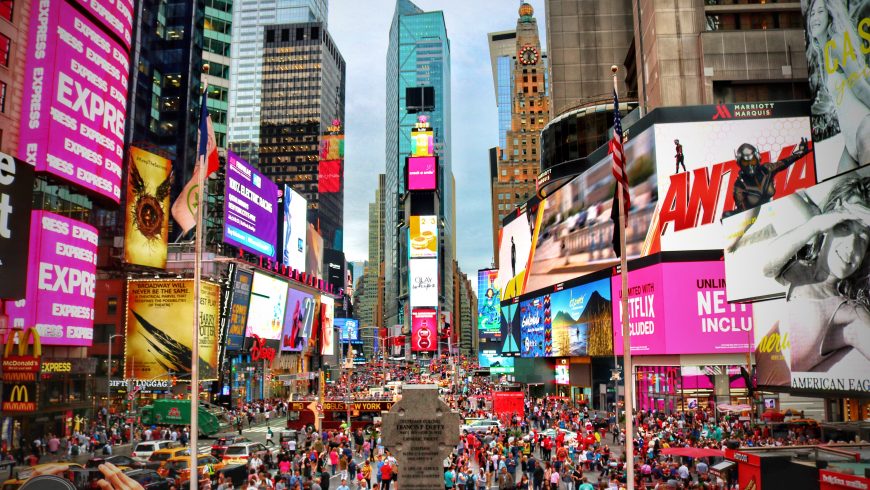
The Causes of overtourism
More than 1.4 billion people are moving around the world every year, and they are growing at an exponential rate. The World Tourism Organisation predicts that by 2030 the international flow of tourists will exceed 2 billion . This very high number of people focus on a few tourist destinations in the world, which suffer from the excessive presence of tourists . The causes of too much tourism are many. From the famous films that make tourist destinations famous to the ease with which you can reach any corner of the world. Also, we can name the cruises that bring large quantities around the seas. We talked about cruises and their environmental impact in this article .

Cultural tourism, a new trend
A trend of the moment is tourism i nfluenced by mass culture . According to this kind of tourism, people chose the destination based on social media , influencers, television programs and films. Tourism influenced by film and TV series products, also known as film tourism , has in some cases led to real disasters. An example is what is happening in the Pacific Islands : in Thailand at Maya Bay , where the film “The Beach” was shot with Leonardo Di Caprio. Over the years, tourists who wanted to see the film set invaded the small beach. This forced the Thai government to prohibit the entry of tourists to restore the delicate balance of the beautiful bay.
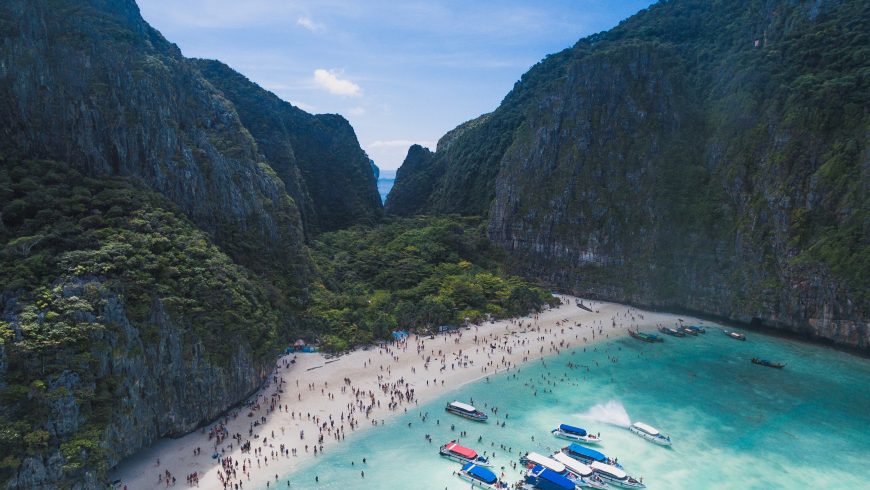
The increase in low-cost air flights and cruises is certainly one of the causes of Overtourism.
The numbers published by the World Tourism Organisation (Unwto) speak for themselves. Even in Italy , we have examples of how mass tourism damages the nature and residents of cities invaded by travelers. Venice , for example, is visited by about 20 million people a year. A number a little too high for such a delicate city, devastated also by cruise ships causing pollution .
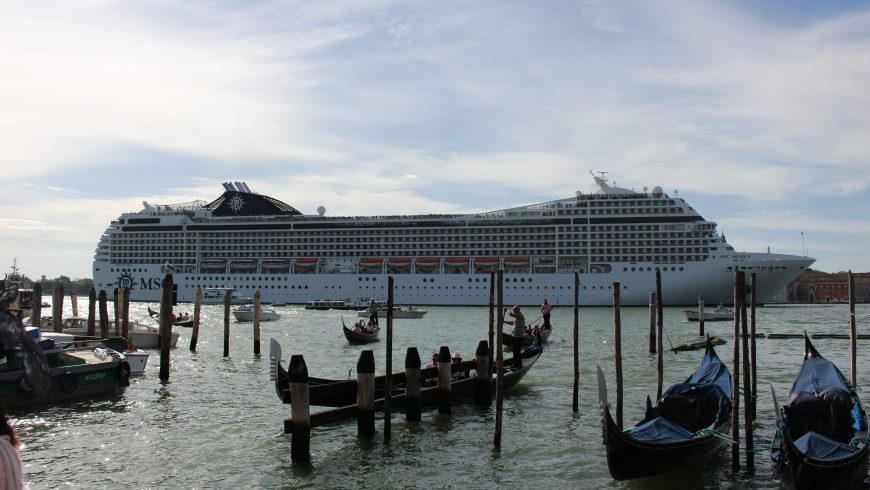
Even Florence , Capri and the Cinque Terre National Park in Liguria suffer from the excessive number of tourists arriving every year. This influx is leading the administrations of the various Italian municipalities to take steps to limit the number of revenues.

Consequences of overtourism
1 destruction of natural ecosystems.
The flora and fauna are usually the first to suffer overtourism in the most popular natural tourist destinations. In some natural destinations, environmental issues led to the destruction of entire ecosystems. Among these problems, we can mention deforestation, exploitation of the soil and pollution . But also, no policy of raising awareness and protecting natural environments. In some cases, this situation has no possibility of redemption, such as, for example, what happens to coral reefs around the world. As global warming and tourists irreparably ruined them, corals are part of a natural system that is becoming extinct.

2. Increase in the amount of waste
Another consequence of mass tourism is the large accumulation of waste that people don’t differentiate. Inevitably, it creates a major environmental problem of disposal and pollution. Boracay Island , in the Philippines, has been closed to restore the ecosystem after years of uncontrolled tourism. The waste problem is also very important on the island of Bali , which is trying to combat it thanks to the thought of Zero waste Bali.
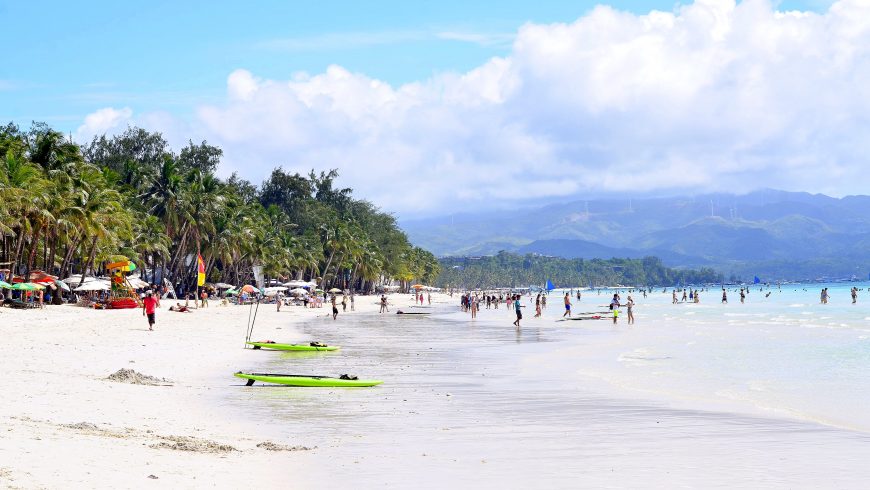
3. Escape and malaise of residents
Too much tourism affects mainly the locals. Across Europe, in cities like Barcelona or Venice, the phenomenon of overtourism has unleashed strong tensions from the inhabitants. Residents complain about the rising of housing prices and rentals. In effect, they inflated them due to the spread of online platforms such as Airbnb. But also, they talked about the disappearance of small shops, replaced by tourist shops, and the inviolability of their cities. The last consequence is the escape of residents from their cities, which have become tourist theatres, thus losing their authenticity.
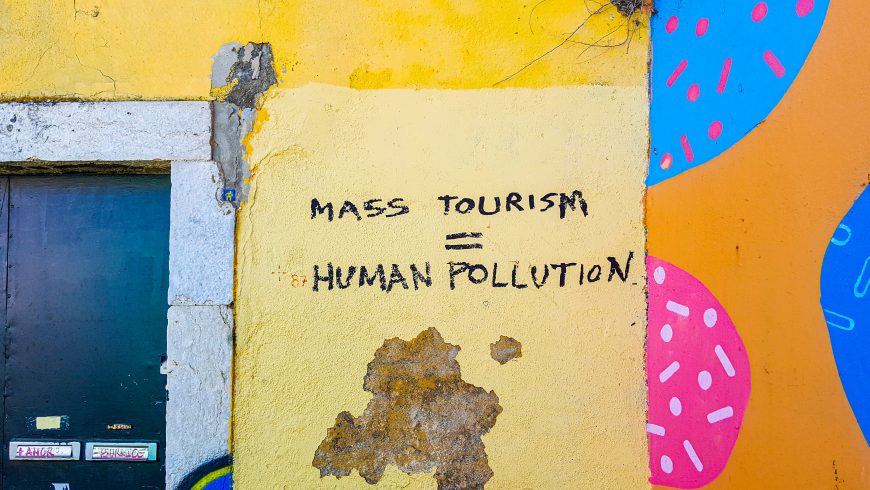
Solutions to overtourism for destinations
As tourist flows around the world increased, the World Tourism Organization (UNWTO) has dedicated an entire Report to overtourism. Certainly, there is not one single solution, but many small things that we can do during our holidays . The Report thus proposes 11 strategies and 68 measures to combat excessive tourism.
Here are the 11 suggestions that tourist destinations can follow to counter the phenomenon of overtourism.
- Encourage the dispersion of tourists within the city, and even beyond the territory, suggesting the visit of lesser-known destinations and less touristic areas.
- Promote tourism in different periods (for example out of season) and at different times from the most popular.
- Create new and different itineraries and tourist attractions.
- Review and improve regulations , such as closing some overcrowded areas to traffic.
- Attract more responsible types of travelers.
- ensure the benefits of tourism to local communities, for example by increasing the number of inhabitants employed in tourism, and by involving residents in the creation of tourism experiences.
- Develop and promote experiences in the city or territory that benefit both tourists and residents.
- Increase the infrastructure and services of the resort.
- Involve the local community in tourist decisions and choices.
- Educate travelers and tell them how to be more responsible and respectful of the place.
- Monitor and measure changes.
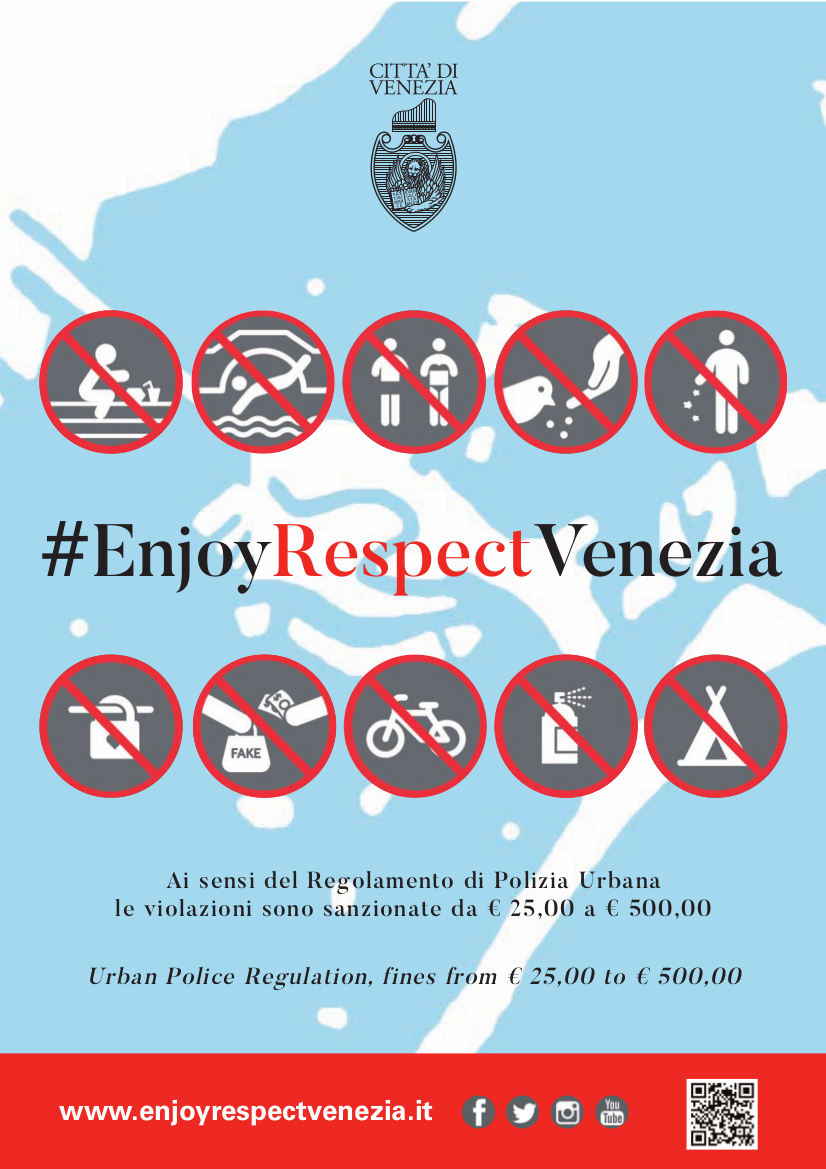
And what can we do?
With Ecobnb we promote responsible tourism , avoiding overcrowded famous destinations and promoting the close destinations. Often we don’t know what surrounds us and which beauties we can find without necessarily taking planes that emit huge amounts of CO2. Slow and sustainable tourism offers authentic locations. These places enrich local communities and those who invest in eco-sustainable activities. The real holiday could also be for you the relaxing and unplugging holiday. You could simply recharge the energies in contact with nature. Nonetheless, remember to try and lessen as much as possible for your environmental impact.
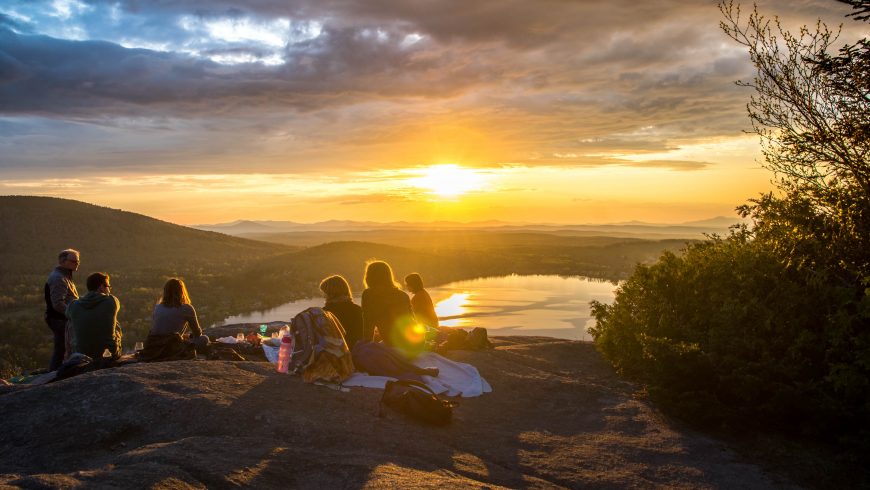
The good news is that each of us can do our part to counteract overtourism and promote sustainable tourism.
Here’s your vademecum
Here are 5 simple ideas , a vademecum, to promote quality tourism, instead of quantity, every time we travel.
- Avoid air flights and cruises, move by train and public transport whenever you can.
- Don’t take your decisions following the mass. If everyone goes to the mountains on August 15, why don’t you choose a different date?
- Organize your holidays in an alternative way, choose authentic and less touristy destinations .
- Travel out of season : spring and autumn are beautiful and less expensive seasons.
- Respect the places you visit (here you find 40 tips to travel green ), try to live like a local”, immerse yourself in the culture of the place and make friends with the inhabitants.
Cover image: photo by Elizeu Dias via Unsplash
You might also like
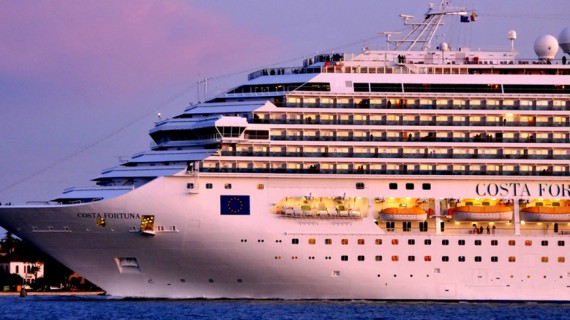
How do cruise ships impact on the environment
The cruise ship is the holiday that has grown faster than any other in the last 20 years. Despite the disaster of the Costa Concordia near the island of Giglio (Italy), cruises are becoming increasingly popular, coming to carry each year about 20 million passengers worldwide and 800,000 in Italy. But it is also the […]
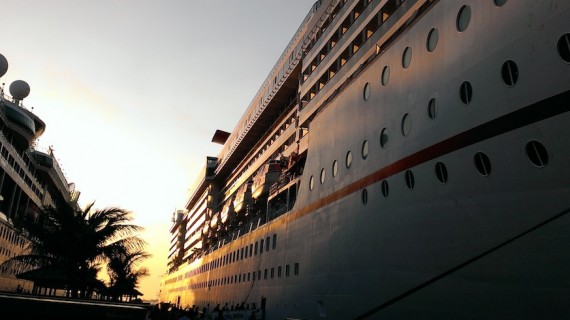
A Cruise Ship Pollutes as One Million Cars
Cruise ships are often associated with luxury and total relaxation, but in reality, they represent huge damage to the environment and the health of passengers and port cities. Cruise ships not only create significant environmental damage but are extremely harmful to health due to their exhaust gases. This is what emerges from the 2016 Environmental […]
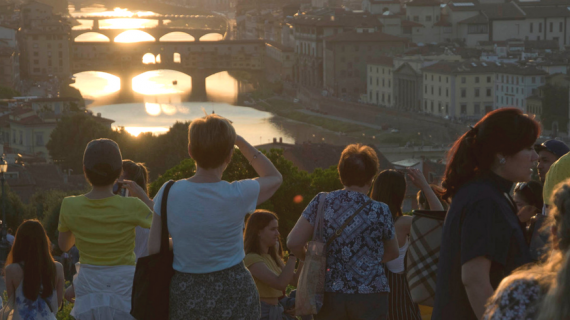
Save our cities from overtourism!
SET (Sud-Europe facing Overtourism): a network created by 15 European cities to denounce the destructive effects of mass tourism and promote the research for a new touristic system. Mass tourism brings enormous amounts of tourists in the main cities. The effects of the so-called overtourism are indeed severe. Cities lost their original artistic, natural and cultural heritage: […]

Pacific Islands: the Paradises ruined by ‘Overtourism’
‘Overtourism’: too much mass tourism threatens fragile ecosystems, such as the Pacific Islands. Philippines, Indonesia, and Thailand the most affected countries. Strategies to preserve destinations and promote responsible tourism are essential Admiring the photos of the dream beaches of some islands of Polynesia or the Philippines is not surprising if in the last few years […]
What is overtourism and how can we overcome it?

The issue of overtourism has become a major concern due to the surge in travel following the pandemic. Image: Reuters/Manuel Silvestri (ITALY - Tags: ENTERTAINMENT)
.chakra .wef-1c7l3mo{-webkit-transition:all 0.15s ease-out;transition:all 0.15s ease-out;cursor:pointer;-webkit-text-decoration:none;text-decoration:none;outline:none;color:inherit;}.chakra .wef-1c7l3mo:hover,.chakra .wef-1c7l3mo[data-hover]{-webkit-text-decoration:underline;text-decoration:underline;}.chakra .wef-1c7l3mo:focus,.chakra .wef-1c7l3mo[data-focus]{box-shadow:0 0 0 3px rgba(168,203,251,0.5);} Joseph Martin Cheer
Marina novelli.

.chakra .wef-9dduvl{margin-top:16px;margin-bottom:16px;line-height:1.388;font-size:1.25rem;}@media screen and (min-width:56.5rem){.chakra .wef-9dduvl{font-size:1.125rem;}} Explore and monitor how .chakra .wef-15eoq1r{margin-top:16px;margin-bottom:16px;line-height:1.388;font-size:1.25rem;color:#F7DB5E;}@media screen and (min-width:56.5rem){.chakra .wef-15eoq1r{font-size:1.125rem;}} Travel and Tourism is affecting economies, industries and global issues

.chakra .wef-1nk5u5d{margin-top:16px;margin-bottom:16px;line-height:1.388;color:#2846F8;font-size:1.25rem;}@media screen and (min-width:56.5rem){.chakra .wef-1nk5u5d{font-size:1.125rem;}} Get involved with our crowdsourced digital platform to deliver impact at scale
Stay up to date:, travel and tourism.
Listen to the article
- Overtourism has once again become a concern, particularly after the rebound of international travel post-pandemic.
- Communities in popular destinations worldwide have expressed concerns over excess tourism on their doorstep.
- Here we outline the complexities of overtourism and the possible measures that can be taken to address the problem.
The term ‘overtourism’ has re-emerged as tourism recovery has surged around the globe. But already in 2019, angst over excessive tourism growth was so high that the UN World Tourism Organization called for “such growth to be managed responsibly so as to best seize the opportunities tourism can generate for communities around the world”.
This was especially evident in cities like Barcelona, where anti-tourism sentiment built up in response to pent-up frustration about rapid and unyielding tourism growth. Similar local frustration emerged in other famous cities, including Amsterdam , Venice , London , Kyoto and Dubrovnik .
While the pandemic was expected to usher in a new normal where responsible and sustainable travel would emerge, this shift was evidently short-lived, as demand surged in 2022 and 2023 after travel restrictions eased.
Have you read?
Ten principles for sustainable destinations: charting a new path forward for travel and tourism.
This has been witnessed over the recent Northern Hemisphere summer season, during which popular destinations heaved under the pressure of pent-up post-pandemic demand , with grassroots communities articulating over-tourism concerns.
Concerns over excess tourism have not only been seen in popular cities but also on the islands of Hawaii and Greece , beaches in Spain , national parks in the United States and Africa , and places off the beaten track like Japan ’s less explored regions.
What is overtourism?
The term overtourism was employed by Freya Petersen in 2001, who lamented the excesses of tourism development and governance deficits in the city of Pompei. Her sentiments are increasingly familiar among tourists in other top tourism destinations more than 20 years later.
Overtourism is more than a journalistic device to arouse host community anxiety or demonize tourists through anti-tourism activism. It is also more than simply being a question of management – although poor or lax governance most definitely accentuates the problem.
Governments at all levels must be decisive and firm about policy responses that control the nature of tourist demand and not merely give in to profits that flow from tourist expenditure and investment.
Overtourism is often oversimplified as being a problem of too many tourists. While that may well be an underlying symptom of excess, it fails to acknowledge the myriad factors at play.
In its simplest iteration, overtourism results from tourist demand exceeding the carrying capacity of host communities in a destination. Too often, the tourism supply chain stimulates demand, giving little thought to the capacity of destinations and the ripple effects on the well-being of local communities.
Overtourism is arguably a social phenomenon too. In China and India, two of the most populated countries where space is a premium, crowded places are socially accepted and overtourism concerns are rarely articulated, if at all. This suggests that cultural expectations of personal space and expectations of exclusivity differ.
We also tend not to associate ‘overtourism’ with Africa . But uncontrolled growth in tourist numbers is unsustainable anywhere, whether in an ancient European city or the savannah of a sub-Saharan context.
Overtourism must also have cultural drivers that are intensified when tourists' culture is at odds with that of host communities – this might manifest as breaching of public norms, irritating habits, unacceptable behaviours , place-based displacement and inconsiderate occupation of space.
The issue also comes about when the economic drivers of tourism mean that those who stand to benefit from growth are instead those who pay the price of it, particularly where gentrification and capital accumulation driven from outside results in local resident displacement and marginalization.
Overcoming overtourism excesses
Radical policy measures that break the overtourism cycle are becoming more common. For example, Amsterdam has moved to ban cruise ships by closing the city’s cruise terminal.
Tourism degrowth has long been posited as a remedy to overtourism. While simply cutting back on tourist numbers seems like a logical response, whether the economic trade-offs of fewer tourists will be tolerated is another thing altogether.
The Spanish island of Lanzarote moved to desaturate the island by calling the industry to focus on quality tourism rather than quantity. This shift to quality, or higher yielding, tourists has been mirrored in many other destinations, like Bali , for example.
Dispersing tourists outside hotspots is commonly seen as a means of dealing with too much tourism. However, whether sufficient interest to go off the beaten track can be stimulated might be an immoveable constraint, or simply result in problem shifting .
Demarketing destinations has been applied with varying degrees of success. However, whether it can address the underlying factors in the long run is questioned, particularly as social media influencers and travel writers continue to give attention to touristic hotspots. In France, asking visitors to avoid Mont Saint-Michelle and instead recommending they go elsewhere is evidence of this.
Introducing entry fees and gates to over-tourist places like Venice is another deterrent. This assumes visitors won’t object to paying and that revenues generated are spent on finding solutions rather than getting lost in authorities’ consolidated revenue.
Advocacy and awareness campaigns against overtourism have also been prominent, but whether appeals to tourists asking them to curb irresponsible behaviours have had any impact remains questionable as incidents continue —for example, the Palau Pledge and New Zealand’s Tiaki Promise appeal for more responsible behaviours.
Curtailing the use of the word overtourism is also posited – in the interest of avoiding the rise of moral panics and the swell of anti-tourism social movements, but pretending the phenomenon does not exist, or dwelling on semantics won’t solve the problem .
Solutions to address overtourism
The solutions to dealing adequately with the effects of overtourism are likely to be many and varied and must be tailored to the unique, relevant destination .
The tourism supply chain must also bear its fair share of responsibility. While popular destinations are understandably an easier sell, redirecting tourism beyond popular honeypots like urban heritage sites or overcrowded beaches needs greater impetus to avoid shifting the problem elsewhere.
Local authorities must exercise policy measures that establish capacity limits, then ensure they are upheld, and if not, be held responsible for their inaction .
Meanwhile, tourists themselves should take responsibility for their behaviour and decisions while travelling, as this can make a big difference to the impact on local residents .
Those investing in tourism should support initiatives that elevate local priorities and needs, and not simply exercise a model of maximum extraction for shareholders in the supply chain.
How is the World Economic Forum supporting the development of cities and communities globally?
The Data for the City of Tomorrow report highlighted that in 2023, around 56% of the world is urbanized. Almost 65% of people use the internet. Soon, 75% of the world’s jobs will require digital skills.
The World Economic Forum’s Centre for Urban Transformation is at the forefront of advancing public-private collaboration in cities. It enables more resilient and future-ready communities and local economies through green initiatives and the ethical use of data.
Learn more about our impact:
- Net Zero Carbon Cities: Through this initiative, we are sharing more than 200 leading practices to promote sustainability and reducing emissions in urban settings and empower cities to take bold action towards achieving carbon neutrality .
- G20 Global Smart Cities Alliance: We are dedicated to establishing norms and policy standards for the safe and ethical use of data in smart cities , leading smart city governance initiatives in more than 36 cities around the world.
- Empowering Brazilian SMEs with IoT adoption : We are removing barriers to IoT adoption for small and medium-sized enterprises in Brazil – with participating companies seeing a 192% return on investment.
- IoT security: Our Council on the Connected World established IoT security requirements for consumer-facing devices . It engages over 100 organizations to safeguard consumers against cyber threats.
- Healthy Cities and Communities: Through partnerships in Jersey City and Austin, USA, as well as Mumbai, India, this initiative focuses on enhancing citizens' lives by promoting better nutritional choices, physical activity, and sanitation practices.
Want to know more about our centre’s impact or get involved? Contact us .
National tourist offices and destination management organizations must support development that is nuanced and in tune with the local backdrop rather than simply mimicking mass-produced products and experiences.
The way tourist experiences are developed and shaped must be transformed to move away from outright consumerist fantasies to responsible consumption .
The overtourism problem will be solved through a clear-headed, collaborative and case-specific assessment of the many drivers in action. Finally, ignoring historical precedents that have led to the current predicament of overtourism and pinning this on oversimplified prescriptions abandons any chance of more sustainable and equitable tourism futures .
Don't miss any update on this topic
Create a free account and access your personalized content collection with our latest publications and analyses.
License and Republishing
World Economic Forum articles may be republished in accordance with the Creative Commons Attribution-NonCommercial-NoDerivatives 4.0 International Public License, and in accordance with our Terms of Use.
The views expressed in this article are those of the author alone and not the World Economic Forum.
Related topics:
The agenda .chakra .wef-n7bacu{margin-top:16px;margin-bottom:16px;line-height:1.388;font-weight:400;} weekly.
A weekly update of the most important issues driving the global agenda
.chakra .wef-1dtnjt5{display:-webkit-box;display:-webkit-flex;display:-ms-flexbox;display:flex;-webkit-align-items:center;-webkit-box-align:center;-ms-flex-align:center;align-items:center;-webkit-flex-wrap:wrap;-ms-flex-wrap:wrap;flex-wrap:wrap;} More on Industries in Depth .chakra .wef-nr1rr4{display:-webkit-inline-box;display:-webkit-inline-flex;display:-ms-inline-flexbox;display:inline-flex;white-space:normal;vertical-align:middle;text-transform:uppercase;font-size:0.75rem;border-radius:0.25rem;font-weight:700;-webkit-align-items:center;-webkit-box-align:center;-ms-flex-align:center;align-items:center;line-height:1.2;-webkit-letter-spacing:1.25px;-moz-letter-spacing:1.25px;-ms-letter-spacing:1.25px;letter-spacing:1.25px;background:none;padding:0px;color:#B3B3B3;-webkit-box-decoration-break:clone;box-decoration-break:clone;-webkit-box-decoration-break:clone;}@media screen and (min-width:37.5rem){.chakra .wef-nr1rr4{font-size:0.875rem;}}@media screen and (min-width:56.5rem){.chakra .wef-nr1rr4{font-size:1rem;}} See all

The energy transition could shift the global power centre. This expert explains why
Liam Coleman
June 4, 2024

Top 5 countries leading the sustainable tourism sector

Robot rock stars, pocket forests, and the battle for chips - Forum podcasts you should hear this month
Robin Pomeroy and Linda Lacina
April 29, 2024

Agritech: Shaping Agriculture in Emerging Economies, Today and Tomorrow

Confused about AI? Here are the podcasts you need on artificial intelligence
Robin Pomeroy
April 25, 2024

Which technologies will enable a cleaner steel industry?
Daniel Boero Vargas and Mandy Chan
The pros and cons of adventure tourism
Is it really worth it to take a risky vacation?
- Newsletter sign up Newsletter
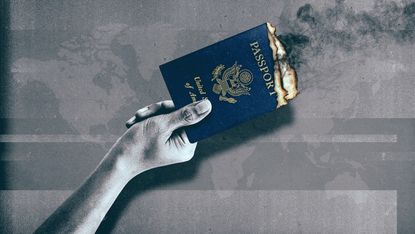
The implosion of the Titan submersible as it plunged 12,500 feet under the sea to view the wreckage of the Titanic, leaving all five people onboard dead, left many asking one question: Is this type of adventure really worth it?
The risks of traveling on the Titan were well-documented. OceanGate, the company that built the submersible, reportedly made participants sign a waiver that mentioned death three times on the first page. OceanGate was also warned by industry experts that the vessel was unsafe. The five travelers still made the trip, and one of the victims, Shazada Dahwood, was "absolutely obsessed" with seeing the Titanic, his sister told NBC News .
Is this type of trip, often called adventure tourism , worth the risk to somebody's life? Do the negatives and risks of climbing a big mountain or trekking through a remote jungle outweigh the positives, or is there something significant to be gained from adventure expeditions?
Subscribe to The Week
Escape your echo chamber. Get the facts behind the news, plus analysis from multiple perspectives.

Sign up for The Week's Free Newsletters
From our morning news briefing to a weekly Good News Newsletter, get the best of The Week delivered directly to your inbox.
Pro: People can learn about the world
Adventure tourism — and travel in general — can give people "an opportunity to see the world from a different perspective, form meaningful relationships, and develop new skills," travel writer Emily Lush reported . This type of tourism also lets travelers have "deeper and more meaningful travel experiences," a phenomenon which "has never been more appealing."
Taking on exotic experiences allows people to "broaden their horizons, learn new skills, and appreciate diversity," per a LinkedIn report. For those who haven't traveled often , or at all, adventure tourism can "foster a sense of connection, purpose, and gratitude, as travelers can contribute to social and environmental causes."
Con: It's dangerous
Perhaps the most glaring negative: Adventure tourism can be hazardous, and the "risk for illness and injury with adventure travel is much greater," Christopher Van Tilburg wrote for the CDC's 2024 travel guide . The risk of "illness and injury is a function of two variables: probability and consequence," Van Tilburg added. He noted that adventure tourism destinations "can be remote and lack access to care," and "trips are often goal-oriented, which can cause travelers to exceed safety limits and take increased risks."
This type of tourism is growing among "thrill-seekers looking for an adrenaline rush, pushing the boundaries of conventional travel and, sometimes, of safe travel," Samantha Delouya reported for CNN .
Sign up for Today's Best Articles in your inbox
A free daily email with the biggest news stories of the day – and the best features from TheWeek.com
Pro: It can improve your health
Adventure travel, as with any physical activity, can have positive health effects. While some people may just go to the gym, "Wouldn't it be more fun to get your exercise while sailing and soaring through the Alpine Arctic and witnessing some of the planet's awe-inspiring landscapes?" Amanda Wells argued for Quark Expeditions .
There are also reported mental health benefits, as "travel is great for relieving stress and improving your general outlook on life," according to the World Travel and Tourism Council . Physical activities "like walking, hiking, and skiing in scenic areas can help you become more hopeful," the organization added.
Con: It's often expensive
Getting onboard the Titan submersible cost $250,000, and similar expeditions often exist "to provide exclusive, expensive, and dangerous travel itineraries to the world's wealthiest would-be explorers," Spencer Buell reported for The Boston Globe . Even with the clear dangers, "Previously unthinkable treks [have] become more accessible to anyone with deep enough pockets," Buell added.
Despite its high costs, the Titan incident "will not dampen demand for 'extreme' tourism where a rescue is unlikely or even impossible," Dr. Adele Doran, principal lecturer in adventure tourism and recreation at Sheffield Hallam University, told Insider .
Pro: It can boost local economies
Adventure travel can prop up smaller economies, helping "free developing countries from downward-spiraling cycles of human poverty and environmental degradation," Kim Joyce reported for USA Today . The promotion of adventure expeditions "improves the community's social and economic health , and elevates community morale —which can lead to more opportunities for investment."
Local economies can be improved "in many ways, from hosting travel groups, to support services such as food and transportation," Elizabeth Sobiski added for The Arizona Republic . This can be especially prevalent in economically depressed areas, where "jobs in transporting, housing, feeding, and entertaining visitors are created."
Con: It can negatively impact the environment
Adventure tourism — and tourism of all types — can result in "pollution and littering, as well as damage to natural habitats. It can also cause problems for locals, who may feel they are being taken advantage of or threatened," Iqbal Uddin Abbasi wrote for LinkedIn .
There are also " environmental hazards associated with adventure tourism activities such as kayaking, rappelling, and scuba diving," Abassi added. These hazards have increased as a result of a changing planet, and the "impacts of climate change mean we need to keep our eyes more open to respond to the changes, and keep reviewing our risk assessments," Christina Beckmann, a climate expert with the Adventure Travel Trade Association, told BBC News .
Justin Klawans has worked as a staff writer at The Week since 2022. He began his career covering local news before joining Newsweek as a breaking news reporter, where he wrote about politics, national and global affairs, business, crime, sports, film, television and other Hollywood news. Justin has also freelanced for outlets including Collider and United Press International.

Puzzles and Quizzes Issue - June 14, 2024
By The Week Staff Published 6 June 24

The Week Recommends The film explores the story of Trudy Ederle, the first woman to swim across the Channel
By The Week UK Published 6 June 24
- Contact Future's experts
- Terms and Conditions
- Privacy Policy
- Cookie Policy
- Advertise With Us
The Week is part of Future plc, an international media group and leading digital publisher. Visit our corporate site . © Future US, Inc. Full 7th Floor, 130 West 42nd Street, New York, NY 10036.
Explore the Pros and Cons of Medical Tourism

Introduction
Imagine needing a medical procedure and discovering you could save thousands by getting it done in a beautiful, faraway land. That’s the allure of medical tourism. Medical tourists travel abroad to places like Costa Rica or Thailand for treatments, from cosmetic surgery to fertility treatments. But how does this tie in with Direct Primary Care (DPC)?
DPC offers personalized, continuous medical care back home. This article explores how combining DPC with medical tourism can maximize benefits and minimize risks. Let’s dive into the pros and cons of this healthcare strategy.
What is Medical Tourism?
Defining medical tourism.
Medical tourism is when people travel abroad for medical care. This can be anything from a quick surgery to more complex medical treatments. Many medical tourists visit countries like Costa Rica or Thailand, seeking advanced medical procedures.
Why Patients Travel Abroad
There are several reasons why patients go abroad for medical care:
- Lower Costs: Treatments in countries like Malaysia or the Dominican Republic can be much cheaper than in the U.S.
- Quality Healthcare: Places like Bumrungrad in Thailand offer top-notch medical services.
- Quick Access: Avoiding long wait times for procedures.
Common Treatments Sought
Patients often seek:
- Cosmetic Surgery: Procedures like plastic surgery.
- Fertility Treatments: Accessing advanced fertility options.
- Major Surgeries: Such as hip replacements or transplants.
This blend of tourist travel and medical care attracts many looking for both savings and quality healthcare.
What is Direct Primary Care (DPC)?
Defining dpc and its benefits.
Direct Primary Care (DPC) is a healthcare model where patients pay a monthly fee directly to their healthcare provider. This fee covers most primary care services, including preventive care, chronic disease management, and routine check-ups. Benefits include:
- Unlimited Access: No co-pays or insurance hassles.
- Personalized Care: Doctors spend more time with patients.
- Predictable Costs: Patients know their healthcare expenses upfront.
How DPC Differs from Traditional Healthcare Models
Unlike traditional healthcare, DPC doesn't rely on health insurance. This means:
- No Insurance Billing: Providers focus on patient care, not paperwork.
- Transparent Pricing: Patients pay a flat fee, avoiding surprise bills.
- Better Patient-Doctor Relationship: More time per visit leads to better outcomes.
Role of DPC in Continuous and Personalized Care
DPC ensures ongoing, tailored medical care, which is crucial for those considering medical tourism. When medical tourists travel abroad for procedures like cosmetic surgery or fertility treatment, their DPC physician can:
- Coordinate Pre- and Post-Care: Ensuring continuity of care with foreign healthcare providers.
- Provide Comprehensive Support: From initial consultation to recovery, patients have a trusted provider.
This model is particularly beneficial for those who go abroad for medical treatments, ensuring quality healthcare both at home and internationally.
Pros of Medical Tourism with a DPC Angle
Cost efficiency, savings on medical procedures abroad.
Traveling abroad for medical procedures can save a lot of money. In countries like Costa Rica, Thailand, or Malaysia, the healthcare cost for treatments like cosmetic surgery or orthopedic procedures is much lower than in developed countries. This is why many choose medical tourism for their medical needs.
DPC’s Affordable Pricing
Direct Primary Care (DPC) adds to these savings with its low monthly fees. Instead of dealing with high insurance costs, patients get continuous care at a predictable price. This means you can plan your medical tourism knowing that your ongoing care at home is affordable and reliable. Combining DPC with medical tourism offers significant financial benefits while ensuring quality healthcare at home and abroad.
Enhanced Care Quality
Continuous care provided by dpc.
Direct Primary Care (DPC) ensures that patients receive ongoing and personalized medical care. This continuous support is crucial for those considering medical tourism. Whether you need cosmetic surgery or an orthopedic procedure, having a DPC provider means you have a healthcare professional monitoring your progress at all times.
Coordination with Foreign Specialists
A significant benefit of DPC is the coordination with foreign specialists. When a medical tourist travels abroad to destinations like Costa Rica or Singapore for advanced medical treatments, their DPC physician can liaise with healthcare providers in these countries. This ensures that the medical treatment plan is consistent and seamless from start to finish.
Preventive and Comprehensive Care
Holistic approach of dpc.
Direct Primary Care (DPC) emphasizes a holistic approach to health. This means focusing on preventive care, not just treating illnesses. By maintaining regular check-ups and health monitoring, DPC helps prevent medical conditions before they become serious. This continuous care is especially valuable for patients planning to go abroad for medical tourism.
Tailored Health Plans
DPC physicians can develop personalized health plans that consider medical tourism. If a medical tourist is heading to a destination like Costa Rica for plastic surgery, the DPC provider can coordinate pre-travel assessments and post-surgery follow-ups. This ensures that medical treatment abroad integrates smoothly with ongoing care at home, making the entire healthcare experience seamless and effective.
Cons of Medical Tourism with a DPC Angle
Continuity of care challenges, coordination issues between specialists and dpc providers.
One major challenge in combining medical tourism with Direct Primary Care (DPC) is coordinating care between international specialists and DPC providers. When a medical tourist travels to a foreign country for a medical procedure, such as plastic surgery in Singapore, ensuring seamless communication between healthcare providers can be complex. This coordination is crucial for maintaining consistent medical treatment across borders.
Difficulties in Transferring Medical Records
Transferring medical records between countries adds another layer of difficulty. Medical records from a healthcare facility abroad may not easily integrate with systems in the home country. This can lead to gaps in medical history and treatment plans. Ensuring accurate and timely transfer of records is essential but often challenging in the context of international travel and medical tourism.
Quality and Risk Management
Variability in healthcare standards abroad.
Medical tourism can expose patients to varying healthcare standards. While some destinations like Bumrungrad in Thailand offer top-tier medical services, other locations may not meet these high standards. This variability can affect the safety and effectiveness of medical treatments abroad.
Challenges in Managing Post-Procedure Complications
Handling complications after returning to the home country can be tough. If a medical tourist faces issues after plastic surgery or another procedure abroad, coordinating follow-up care with local healthcare providers can be complex. Ensuring continuity of care and managing post-procedure complications from afar requires careful planning and communication between all parties involved.
Legal and Ethical Considerations
Regulatory differences between countries.
Medical tourism involves navigating different healthcare regulations. Each country has its own standards for medical treatments, physician qualifications, and healthcare facility accreditations. For instance, a medical tourist might find that the regulations in South Korea differ significantly from those in their home country. These differences can impact the quality and safety of medical services received abroad.
Medical Malpractice and Liability Across Borders
Handling medical malpractice and liability issues in a foreign country is complex. If complications arise after a surgical procedure in a tourism destination like Malaysia or the Dominican Republic, seeking legal recourse can be challenging. The process involves understanding the healthcare system and legal framework of the destination country. Additionally, the protections and remedies available may differ greatly from those in developed nations. Ensuring proper legal and medical support before engaging in medical tourism is crucial for navigating these challenges.
In this article, we explored the intersection of medical tourism and Direct Primary Care (DPC). We highlighted how medical tourists benefit from cost-effective medical treatments abroad and how DPC provides continuous, personalized care. Medical tourism destinations like South Korea and Singapore offer advanced medical services at lower costs, making them attractive options.
However, navigating the complexities of different healthcare systems, regulatory standards, and legal issues requires careful planning. Coordination between DPC providers and foreign medical facilities is crucial to ensure seamless care. Weighing the pros and cons will help you make informed decisions about combining medical tourism with DPC.
Ultimately, both careful planning and strong coordination are key to a successful healthcare experience.
Take Action
If you’re considering medical tourism, talk to your DPC provider . They can help you plan and coordinate your medical treatments abroad. For more personalized advice, reach out to your DPC clinic today to ensure a safe and successful healthcare experience.
Welcome to Decent : a new kind of health plan.
Join our monthly newsletter to stay in the know!
.png)
Healthcare Rebel Alliance: Q&A with Chloe Yoo, CFO of HumanFirst

Best Sales Closing Strategies for DPC

Healthcare Rebel Alliance: Q&A with David Balat, Founder of Healthcare Finance Specialists

The Role of Personalization in Your Health Care Journey

Healthcare Rebel Alliance: Q&A with Halle Tecco, Cofertility

Maintaining Work-Life Balance: How Direct Primary Care Can Help

Ideal Balance: Physician Specialties That Make Doctors Happy

Healthcare Rebel Alliance: Q&A with Mark Tomasulo, One Medical

How to Become a Health Insurance Agent
- - Google Chrome
Intended for healthcare professionals
- Access provided by Google Indexer
- My email alerts
- BMA member login
- Username * Password * Forgot your log in details? Need to activate BMA Member Log In Log in via OpenAthens Log in via your institution

Search form
- Advanced search
- Search responses
- Search blogs
- News & Views
- Medical tourism...
Medical tourism facilitators walk a tightrope between ethics and business
- Related content
- Peer review
- Charu Bahri , freelance journalist
- Rajasthan, India
- charubahri{at}gmail.com
A new market of intermediary fixers for medical tourists say that they can lower the risks associated with seeking treatment overseas. Charu Bahri asks what these facilitators do—and who oversees them?
When Marie Gopaul,* a 71 year old Mauritian, needed a hip replacement she and her family had concerns about doing it locally. “Doctors told me that the outcomes of robotic hip replacement are the best,” says Marie’s son Louis.* “In Mauritius many hip replacement patients who are operated on conventionally struggle to walk postoperatively.”
Because robotic surgeries weren’t available in Mauritius the family decided to pay for Marie to have surgery abroad—becoming one of the hundreds of thousands of patients who choose to become medical tourists in a market projected to grow from US$24.14bn (£19bn; €22.24bn) in 2023 to $93.38bn by 2030. 1 They settled on India, and for assistance in choosing a doctor and a hospital Louis approached an online medical tourism facilitator recommended by his friends.
Medical tourism facilitators manage and coordinate all activities related to the care of patients and their treatments while travelling abroad, such as visa applications, hotel stays, and airport transfers, although patients normally pay separately for flights. 2 They function as intermediaries between medical tourists (some also work with domestic patients) and a wide network of hospitals.
Brokers or middlemen first emerged in the medical tourism market in India around 2010. They faced resistance from the leading Indian hospital chains, which tried to get them banned with assistance from the Federation of Indian Chambers of Commerce and Industry. 3 But the intermediaries proved steadfast, and eventually India’s leading health standards body, the National Accreditation Board for Hospitals and Healthcare Providers (NABH), officially recognised them under the title medical value travel facilitators.
The NABH introduced “empanelment,” 4 a form of accreditation where inspectors evaluate a facilitator’s services and grant empanelment status if they pass. But empanelment isn’t synonymous with regulation. There are still documented instances 5 6 of domestic patients filing a medical negligence complaint with the police or speaking out on social media against an empanelled facilitator. And, when treatments fail, the NABH has no role to play.
The absence of stricter regulation, as well as concerns over the veracity of information displayed on facilitators’ websites and whether they follow ethical guidelines, 7 has led some critics to warn that facilitators “highly emphasise benefits while downplaying the risks.” 8
Facilitators say that they help prospective patients understand their options. “It’s difficult to choose the right doctor when they all claim to be the best, especially when you don’t speak the local language,” says Louis, when asked why he didn’t approach a hospital directly. “What clinched it for me this time was the facilitator’s counsellor telling me that she would choose the same renowned orthopaedic doctor in Delhi for her own mother.”
Through facilitators patients can get access to treatment options at different price points, something a single hospital can’t deliver. Abhik Moitra, director at HBG Medical Assistance, a leading Indian facilitator, says, “We can offer a Whipple procedure [pancreaticoduodenectomy to remove cancerous tumours from the head of the pancreas] at $12 000 at a top hospital in a leading metro, or at $8000-$9000 in a smaller city.”
Facilitators in India have told The BMJ that they’re conscious of the hospitals they work with, preferring those accredited by the Joint Commission International and the NABH. They also look for hospitals that demonstrate a managerial commitment to international patients and those that have invested in cutting edge technology.
Beyond physical amenities, medical tourism facilitators can support patients’ more personal needs, such as language barriers and settling in. In emerging markets especially, they “ease exposure in unfamiliar settings by dealing with medical and tourism providers.” 9 Louis believes that medical tourists who don’t speak the local language “tend to get fleeced” without a service provider.
Benjamin Hunter, lecturer at the University of Glasgow and an expert on the global healthcare economy, says, “Desperate people, unfamiliar settings, and commercialised healthcare are a recipe for exploitation. Facilitators can ameliorate some of this—or exacerbate it.”
Critics argue that facilitatory service providers work within an absent or limited regulatory framework 10 that limits their responsibility if things go wrong. Treatment failures can burden the patient, as well as public health services in the patient’s home country. 11 For that reason the UK, among others, has drawn up guidelines for prospective medical tourists. 12
The UK’s NHS guidelines on going abroad for medical treatment 13 include a strong recommendation for patients to consider continuity of care and inquire about any compensation for negligence. This can vary by provider. Some Lithuanian hospitals, for instance, promise free further treatment if anything goes wrong, 14 whereas one Lithuanian private hospital, Nordorthopaedics, told The BMJ that only a part of the cost would be waived if the patient needed further intervention.
Likewise, using a facilitator in India doesn’t necessarily add any guarantees. Pankaj Chandna, cofounder of Vaidam.com, a leading facilitator in India, agrees that “a few patients need revision surgery” but says that his company “tries to support such patients as much as possible to alleviate their mental trauma and financial burden.”
Chandna’s company runs a programme called Vaidam Reconnect, “to stay in touch with patients and assign a case manager to those who need further assistance.” He says that recently a patient from Sierra Leone needed corrective surgery after an operation. “Our partner hospital waived the surgical fee and 70% of the medical charges,” says Chandna.
Heidi Kaspar of the Department of Health Professions at the Bern University of Applied Sciences in Switzerland has introduced the notion of “therapeutic itineraries” in medical tourism because she sees medical journeys as “circular movements” rather than “singular and straightforward trips from A to B.”
“Numerous uncertainties [and] inadequate diagnostics at home complicate treatment abroad, prolong the stays of patients, and require family caregivers to return home in order to arrange funding or to organise absence at home,” she says. “On top of this, aftercare and unpredictable illness trajectories when back home lead to replicate journeys.”
Conflicts of interest
Perhaps the biggest concerns about facilitators are their fairness and competence 15 when choosing appropriate doctors and hospitals—and the possibility of pushing unnecessary treatment 16 that’s not in the best interest of patients, just to make a sale.
Facilitators The BMJ spoke to in India said that they don’t charge patients, but they do earn a facilitation fee or marketing fee from the hospitals that treat their referred patients. These payment arrangements differ by hospital. “Some agreements cover outpatient consultations, others only hospital admissions,” says Moitra. Some agreements extend to covering marketing expenses, including outreach programmes where medical value travel facilitators can help advertise hospitals open to private referrals by arranging consultation programmes in partner hospitals in target countries.
Such arrangements stem from the “cut system” in the Indian healthcare sector that the government has yet to legislate against. 17 18 Hunter says, “Opaque commissions breed mistrust, but ultimately facilitators are only one component in a bigger system, and exploitation is not unique to medical travel: the problem is profit driven healthcare.”
Other countries in the region have stricter rules to combat this. Asia’s leading medical tourism destination is Singapore, and its health ministry doesn’t allow doctors and hospitals to pay for referrals, says Nakul Singh, who represents Mount Elizabeth Hospital in India and manages India operations at IHH Healthcare’s Singapore division. Singaporean hospitals open representative offices in overseas target countries to counsel patients, he adds.
Last year around half a million medical tourists entered India, and the central government launched a campaign, Heal in India, to boost medical tourism. Prasanna Saligram, a public health researcher with the People’s Health Movement India, believes that the number isn’t yet high enough to push the government for further regulations, particularly as it “has so many larger issues to address.” He points to the disparity between the cost of healthcare in public and private hospitals.
“Our health sector regulatory framework is very weak,” he explains. “The Indian healthcare story is about ‘globalised’ and ‘marginalised’ patients. Private hospitals thrive on the globalised Indian, high net worth individuals, and medical tourists are just the cherry on top, while poorer people struggle to access healthcare.”
Facilitator driven outreach
Santosh Shetty is chief executive officer of Kokilaben Dhirubhai Ambani Hospital in Mumbai. His hospital is one that works with facilitators, whose services he appreciates when they work within an organised framework and in the patient’s best interests.
“Facilitators with a strong network and presence in the target geographies can help get the necessary licences and permissions for events and can guide local patients,” says Shetty. “Their offices can sometimes also serve as a local centre, which is very reassuring to patients and can overcome language barriers.”
He says that facilitators referred 20-25% of his hospital’s 2600 international patients in 2023. “While we have a dedicated international patient department, our global reach is amplified through credible facilitators,” says Shetty.
“Credible” is the key word. While Louis was appreciative of the facilitator’s team (one of 26 companies empanelled with the NABH 4 ) and the surgeon, he wasn’t blind to gaps in the service. “Our stay in a one star hotel left a lot to be desired,” he says. “I know you get what you pay for, but we could have been better guided on that front.”
In the hospital, says Louis, his mother had a long wait before the first consultation despite having an appointment, and he was charged 65 rupees (about 60p) for every cup of tea he ordered while his mother was in the intensive care unit. “When you’re paying more than double the cost of treatment in your home country you expect better service,” he says. (The hip replacement cost him $6500, which compares with $2500 at a private clinic in Mauritius.)
Nevertheless, the family got what they wanted: Marie had her surgery in January 2024. “The doctor delivered exactly as he had promised,” says Louis. “He had said that Mother would be walking independently a fortnight after being operated on, and she was.”
*Names of patients and their families have been changed.
Competing interests: I have read and understood BMJ policy on declaration of interests and have no relevant interests to declare.
Provenance and peer review: Commissioned; not externally peer reviewed.
- ↵ Fortune Business Insights. The global medical tourism market size is projected to grow from $24.14 billion in 2023 to $93.38 billion by 2030, at a CAGR of 21.3% over the forecast period. Oct 2023. https://www.fortunebusinessinsights.com/industry-reports/medical-tourism-market-100681
- ↵ National Accreditation Board for Hospitals & Healthcare Providers. Medical value travel facilitator empanelment programme. https://nabh.co/medical-value-travel-facilitator-mvtf/
- ↵ National Accreditation Board for Hospitals & Healthcare Providers. Certified MVTF. https://nabh.co/accreditedmvtf/
- ↵ Ahluwalia H. How Pristyn Care is misleading hospitals and patients. Morning Context 2024 Jan 17. https://themorningcontext.com/internet/how-pristyn-care-is-misleading-hospitals-and-patients
- ↵ Raghavan R. Inside the chaos at Pristyn Care. Mint 2023 Aug 31. https://www.livemint.com/companies/news/inside-the-chaos-at-pristyn-care-11693337299658.html
- Wright KB ,
- O’Connor M ,
- Wombacher K
- Hanefeld J ,
- Horsfall D ,
- ↵ NHS. Going abroad for medical treatment. Reviewed 13 Oct 2023. https://www.nhs.uk/using-the-nhs/healthcare-abroad/going-abroad-for-treatment/going-abroad-for-medical-treatment/
- ↵ Das S, Ungoed-Thomas J. “It’s not medical tourism, it’s desperation”: rising number of Britons resort to treatment abroad. Guardian 2023 Jan 21. https://www.theguardian.com/society/2023/jan/21/not-medical-tourism-desperation-britons-resort-treatment-abroad
- Crooks VA ,
- Kingsbury P ,
- ↵ Debroy S. 6 years on, bill against “cut practice” in medical sector back in spotlight. Times of India 2023 Apr 9. https://timesofindia.indiatimes.com/city/mumbai/6-years-on-bill-against-cut-practice-in-medical-sector-back-in-spotlight/articleshow/99350484.cms
- ↵ Nagral S, Nundy S. We need to end “cut” practice in Indian healthcare. BMJ Opinion 2017 Jul 17. https://blogs.bmj.com/bmj/2017/07/07/we-need-to-end-cut-practice-in-indian-healthcare/
A Systematic Review of Chatbots: Classification, Development, and Their Impact on Tourism
Ieee account.
- Change Username/Password
- Update Address
Purchase Details
- Payment Options
- Order History
- View Purchased Documents
Profile Information
- Communications Preferences
- Profession and Education
- Technical Interests
- US & Canada: +1 800 678 4333
- Worldwide: +1 732 981 0060
- Contact & Support
- About IEEE Xplore
- Accessibility
- Terms of Use
- Nondiscrimination Policy
- Privacy & Opting Out of Cookies
A not-for-profit organization, IEEE is the world's largest technical professional organization dedicated to advancing technology for the benefit of humanity. © Copyright 2024 IEEE - All rights reserved. Use of this web site signifies your agreement to the terms and conditions.

IMAGES
VIDEO
COMMENTS
Balancing the disadvantages of tourism and advantages of tourism is a delicate task requiring thorough planning, strategic management, and conscious efforts from all stakeholders involved, including tourists, the local community, and the government. Below are some strategies that can help:
Disadvantages of Tourism. Environmental degradation: Tourism can have a negative impact on the environment, including increased pollution, depletion of natural resources, and destruction of wildlife habitats. Cultural erosion: Tourism can lead to the erosion of traditional cultures and ways of life. This is especially true in areas where ...
The Pros of Tourism. From stimulating job growth to bridging cultural divides, tourism has many benefits for people, the economy and the environment. Below are five advantages of tourism. 1. Creates Jobs. One of the most significant benefits of tourism is creating jobs for people who may have previously been unemployed.
The disadvantages of tourism: Conclusion . As I mentioned previously, this list is by no means exhaustive and unfortunately there is a range of other disadvantages of tourism. The problems tourism can cause in destinations around the world are complicated and entangled with other deep societal issues such as development, globalisation and ...
Tourism sector has great influence over wellbeing of local residents. It is an industry that flourishes in large cities as well as remote rural areas rich in natural wonders. For many distant communities, tourism is the only opportunity of generating sufficient income to sustain their lifestyle and traditions.
As it stands, overtourism is a seasonal issue for a small number of destinations. While there is no one-size-fits-all solution, a range of measures are clearly an option depending on the scale of ...
The Disadvantages. With the way the tourism industry is currently run, the disadvantages of tourism may greatly outweigh the advantages in a country. The first factor to take into consideration is environmental damage. When a country has a high tourist attraction, the number of people occupying a space increases immensely. As a result, the ...
Development of the Private Sector. Negative economic impacts of tourism. Leakage. Infrastructure cost. Increase in prices. Economic dependence of the local community on tourism. Foreign Ownership and Management. Economic impacts of tourism: Conclusion. Further reading on the economic impacts of tourism.
The Disadvantages of Tourism. Environmental. Tourism can often cause environmental damage due to risks like erosion, pollution, loss of natural habitats, and forest fires. Even if tourists behave responsibly, the sheer number of them can cause harm. Ancient buildings, monuments, and temples often struggle to cope with increased traffic and ...
Tourism is fundamental to human well-being and indeed can be a tool for increased well-being of our planet. The articles in this issue are a start in describing the many ways tourism can create meaning and well-being for people and planet. An enhanced ethic of responsibility and caring for each other and life, along with innovations in the way ...
The negative environmental impacts of tourism are substantial. They include the depletion of local natural resources as well as pollution and waste problems. Tourism often puts pressure on natural resources through over-consumption, often in places where resources are already scarce. Tourism puts enormous stress on local land use, and can lead ...
Widening income gap: Tourism can also lead to a widening income gap, as the benefits of tourism may not be distributed equally among all members of a community. This can lead to an increase in poverty, and social inequality. Inflation: Tourism can also lead to inflation, as the demand for goods and services increases, prices may rise, making it ...
What are the advantages and disadvantages of Tourism? Answer: Tourism is a type of industry that relies on the willingness or need for individuals and organisations to visit or move to a certain area. It can often be very beneficial, but it can also have drawbacks. For example, Tourism creates jobs in an area and helps the economy grow.
One of the significant advantages of tourism is that it can help protect and preserve the environment. Local governments can invest the revenue generated by tourism for the betterment of environmentally sensitive regions and areas with fragile ecosystems. 4. Improved Infrastructure is Among the Pros of Tourism.
Conclusion. There are both advantages and disadvantages to tourism. On the plus side, tourism can have both a favorable impact on the economy and drawbacks. Because of this, it's crucial to manage tourism operations responsibly and sustainably through careful planning, community involvement, and the implementation of sustainable tourism ...
These disadvantages are sometimes ignored by the tourism sector of that country as their sole purpose becomes profit. We must consider all aspects of tourism which include environmental responsibilities, profit and sustainability. Today, we will look at some of the Pros and Cons of Tourism; Advantages of Tourism 1. Wealth Generation
Tourism can have positive and negative effects on people and the environment. Tourism is an important industry and can aid the development of low-income countries.
Tourism is a modern and growing industry that has a high impact on human life. The interface between culture and tourism is immense, and they have both negative and positive outcomes for one another. Studying the impact of tourism on culture has become a hot topic of discussion among concerned scholars.
Tourism today is paradoxically dominated by two opposite aspects: its sustainable character and overtourism. Since its creation by Skift in 2016 (Ali 2016), the term "overtourism" has been a buzzword in media and academic circles, although it may only be a new word for a problem discussed over the past three decades.. Overtourism is a complex and multifaceted phenomenon destructive to ...
The Causes of overtourism. More than 1.4 billion people are moving around the world every year, and they are growing at an exponential rate. The World Tourism Organisation predicts that by 2030 the international flow of tourists will exceed 2 billion.This very high number of people focus on a few tourist destinations in the world, which suffer from the excessive presence of tourists.
The term 'overtourism' has re-emerged as tourism recovery has surged around the globe. But already in 2019, angst over excessive tourism growth was so high that the UN World Tourism Organization called for "such growth to be managed responsibly so as to best seize the opportunities tourism can generate for communities around the world".
The World Tourism and Travel Council says that of 1.4 billion international tourist trips in 2018, more than 36%, or half a billion, involved a visit to one of the planet's 300 most popular ...
Adventure tourism — and tourism of all types — can result in "pollution and littering, as well as damage to natural habitats. It can also cause problems for locals, who may feel they are being ...
Medical tourism destinations like South Korea and Singapore offer advanced medical services at lower costs, making them attractive options. However, navigating the complexities of different healthcare systems, regulatory standards, and legal issues requires careful planning. Coordination between DPC providers and foreign medical facilities is ...
A new market of intermediary fixers for medical tourists say that they can lower the risks associated with seeking treatment overseas. Charu Bahri asks what these facilitators do—and who oversees them? When Marie Gopaul,* a 71 year old Mauritian, needed a hip replacement she and her family had concerns about doing it locally. "Doctors told me that the outcomes of robotic hip replacement ...
Recently, we have observed a noticeable evolution and growing use and incorporation of chatbots on websites, mobile and social networking apps. A chatbot is a computer program that exhibits a capacity to converse quite naturally with users in a way that resembles a human dialogue. Examples of chatbots can be found in several areas, including education, commerce, and tourism. The use of ...